Ronald.phillips
Shared posts
System Shock - FPS that changed PC Games forever
Kick Burnout to the Curb by Sleeping More - CNET
Why High Tech Companies Struggle with SaaS Security
When, Exactly, Did The Fast And Furious Franchise Become About 'Family'?
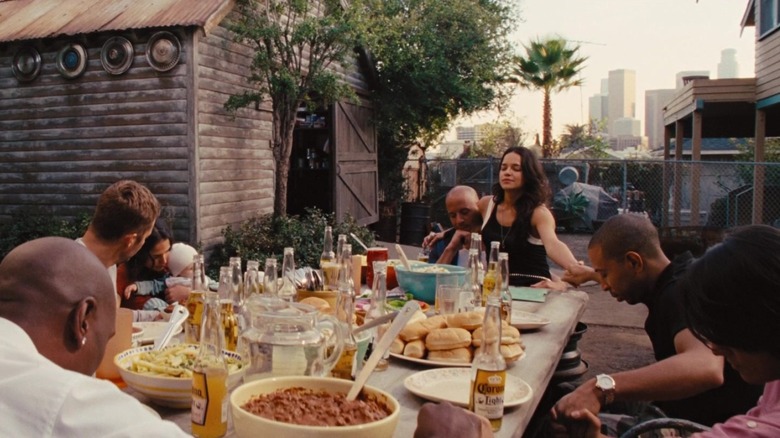
"Fast & Furious" is one of our greatest movie franchises, one that isn't afraid to let go of continuity for the sake of reinventing itself. Perhaps more than any other series of movies — other than "Mission: Impossible" — the "Fast & Furious" films are guided by only one principle: the rule of cool. Whether that's racing a submarine, driving on an endless airport runway, or literally going to space, there is no limit to what the family can do.
We are nearing the end of the road for Dominic Toretto and his family, with "Fast X" just around the corner. So, it is time to look back on the "Fast & Furious" franchise and how we got here. After all, the franchise we have today is not the same as it was in 2001 when "The Fast and the Furious" premiered. So much has changed, the crew has grown, the cars got faster and more furious, and at some point, the franchise stopped being about illegal car racing, and became a saga about family. The big question is, when did that happen? Was the franchise secretly always like this, and we just didn't notice? Or was there a specific turning point?
By "family," we mean the characters caring more about their little group than competing amongst themselves or personal profits. This shift also happened in audiences, with many fans starting to care about the characters more than the cool stunts — because true fans know the car stunts are cool, but the real draw is "family."
Like a good detective, let's first check the suspects.
In The Beginning, There Were Cars
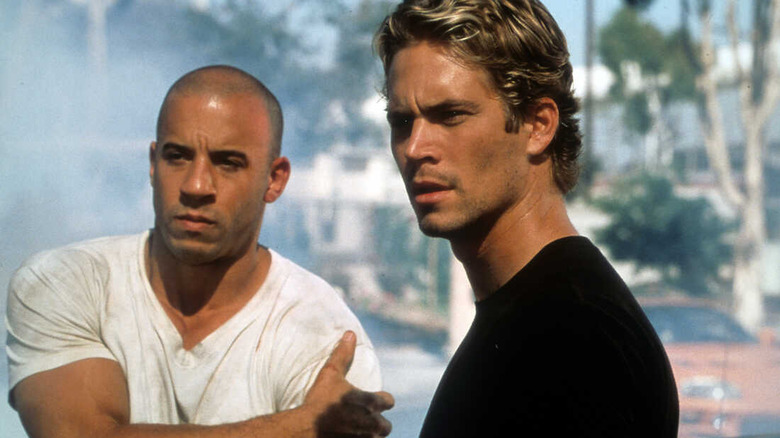
The logical first suspect would be the original film, "The Fast and the Furious," which elevated what is otherwise a clear copy of "Point Break" to a poignant movie about brotherhood and racing. This is the first time we meet the members of the family, including the true heart and soul of the franchise, Brian O'Conner, Dominic Toretto, and more, but despite this being our first look at the family barbecue, the characters aren't yet a family. Dom and Brian sort of respect each other, and Brian and Mia start their romance, but they're just getting to know each other, and they all part ways by the end of the film.
What about the sequel, then? "2 Fast 2 Furious" does add to the franchise in significant ways, like giving us Tej and Roman, and its follow-up, "Tokyo Drift" is clearly the best film in the franchise, but Dominic Toretto is not in either of these so they can't be the answer since the family is lacking its grunt-enthusiast dad.
I Don't Have Friends, I Have Family
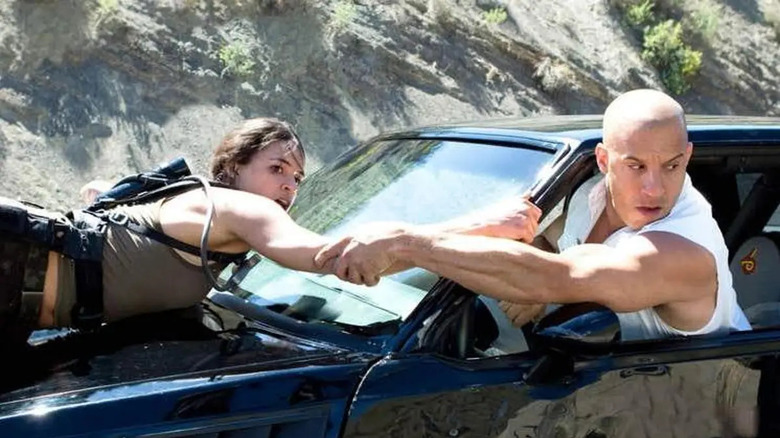
The other possible turning point is "Fast & Furious 6," which is when the plot starts to get personal. By this point, Dom has figured out Letty is still alive, and he tries to get her back. It is also with this movie that the franchise starts giving us villains with personal stakes and personal connections to Dom and the gang, with the plots directly impacting the family in a personal way, driven by vengeance or resentment. Even the bad guy, Owen Shaw, recognizes that Dom's code is about family, so word has definitely spread.
The problem, however, is that by this point, family is as much a part of the franchise as the cars — and the audience knows it, so it can't be "Fast & Furious 6." Likewise, the turning point has to be before "Furious 7." Despite that being the movie that gave us the "I don't have friends, I got family" line, this is the movie where we lose Brian, and there is no family without Brian, so it has to come before.
The logical conclusion would be "Fast & Furious," the fourth film in the franchise and the one that not only reunites Dom and Brian, but also introduces Gal Gadot, Leo, and Santos. This movie's plot is all about family, as Dom investigates and tries to avenge Letty's apparent murder, and it is the film that fully turns these movies into Hollywood's most Latino franchise out there.
The problem is that Dom and Brian are still not friends. In this movie they are rivals, and you can't call this "family" if the two dads are not friends.
The Verdict
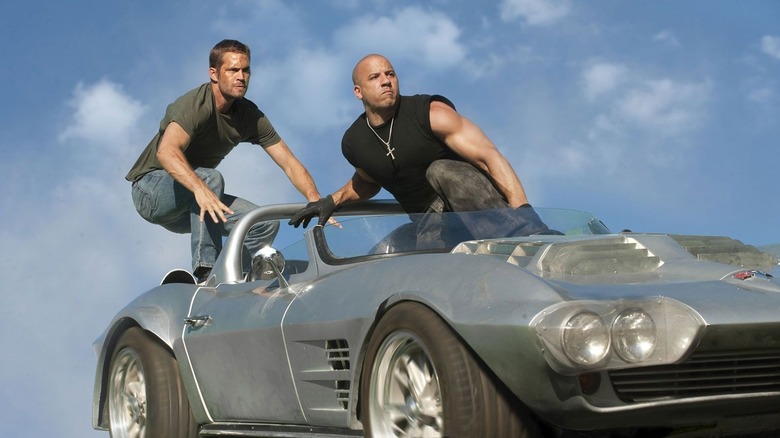
And so, we arrive at the only possible correct answer, "Fast Five." This is it, this is the movie that changes everything for the "Fast & Furious" movie. While many elements we now associate with the franchise were actually introduced in the fourth film, "Fast Five" perfected them.
This is the film that turned the franchise from low-budget movies about racing to massive, multi-million-dollar endeavors with ever-growing budgets about spies (that also drive cars). It is here that we meet Agent Hobbs, and Elena Never, the future mother of Dom's child.
Most importantly, it is in "Fast Five" that Brian and Dom fully become brothers, with Brian leaving his life as a federal agent behind and breaking Dom out of prison. It is in this film that we see the entire team come together for the first time, including Roman and Tej from the second movie, Han and Gisele from the third and fourth movies, and even Vince from the very first movie. Family turned from just a cool thing Dom says to becoming his whole identity, as he gives his best speech in "Fast Five," where he "salud, mi familia" with the entire group together.
It is also "Fast Five" where the perception of the franchise changed, where critical reception skyrocketed and "Fast & Furious" became a saga that could ground even the most ridiculous concepts thanks to "family."
Read this next: 17 '80s Action Movies You Definitely Need To See
The post When, Exactly, Did the Fast and Furious Franchise Become About 'Family'? appeared first on /Film.
Season Your Food Gently With Sea Salt Spray

Giant salt flakes are the cool kids of food pop culture. It makes sense, they make a great snacking salt, but they’ve managed to siphon away attention from the other, more subtle forms of sodium chloride. You don’t always have to flaunt your flakes. Sometimes big flakes are too aggressive, or a sprinkle of table salt…
The 10 best open world games to play in 2023
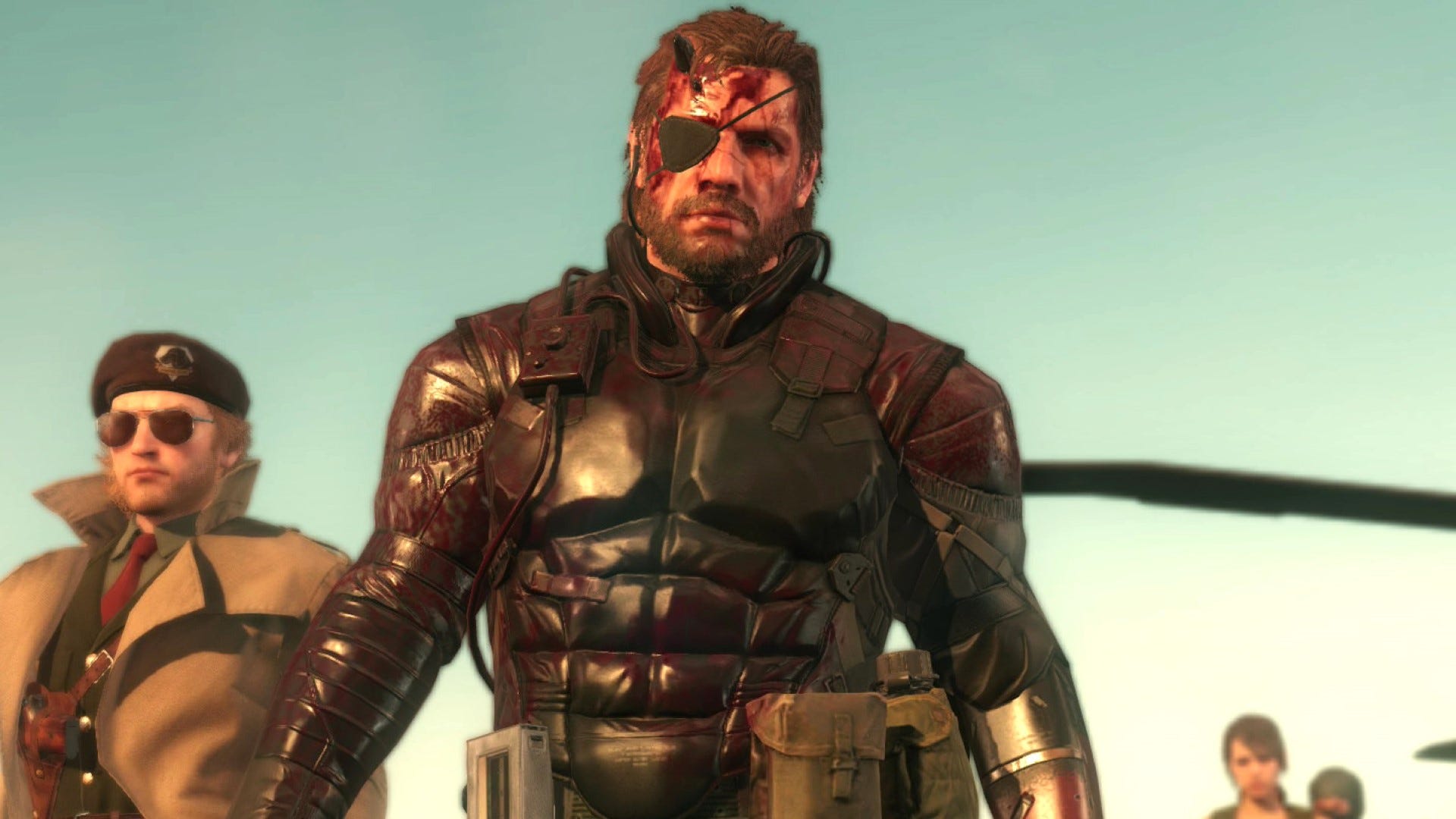
The best open world games can mean a lot of things, but here we're going with the strongest selection of games set in a sandbox, where the onus is less on survival and more on exploration or questing. You know, the sort of games where you're let loose on some open turf, perhaps with an objective, perhaps not, but always with an eye to see what's over yonder. There are some exceptions to the rule, but we reckon they're justified because some worlds are too special to discount. So, join us as we've put together our list of the 10 best open world games to play in 2023.
Startup Plans To Give Away 500,000 Free 4K TVs. The Catch? The Sets Have a Second Screen That Constantly Shows Ads
Read more of this story at Slashdot.
Apple To Gain An Unrivaled Foothold Against Competitors As It Secures 90 Percent Of TSMC’s 3nm Shipments

Apple looks to be the only company in 2023 to unveil the world’s first 3nm chipset from TSMC and according to the latest report, the technology firm is several steps ahead of the competition as it has reportedly secured 90 percent of the Taiwanese giant’s cutting-edge chip shipments.
TSMC to gain growth momentum of its 3nm process in the second half of 2023, likely due to higher chip demand from Apple
Even though Apple’s M3 SoC for future iPad and Mac models has been delayed until next year, the company still has plans to announce the A17 Bionic exclusively for the iPhone 15 Pro and iPhone 15 Pro Max in 2023, along with the improvements that come with being mass produced on TSMC’s 3nm architecture. According to a paywalled report published by DigiTimes and spotted by MacRumors, the manufacturer stands to grow significantly as a result of Apple’s increased 3nm chip requirements.
Previously, it was rumored that TSMC was struggling to fulfill Apple’s chip demand for 3nm shipments, which could be one of the reasons why the M3 was delayed until next year. Also, as witnessed in the company’s latest earnings call, iPhones brought in more than half of that $94.8 billion revenue, while iPad and Mac sales witnessed a slump. In this regard, it makes complete sense to delay the M3 in favor of increasing the A17 Bionic production for the iPhone 15 Pro and iPhone 15 Pro Max.
TSMC has multiple variants of its 3nm chip technology in tow, with the first iteration dubbed N3B. The report does not mention the manufacturer’s overall monthly output or how much production will pick up in the coming months. However, DigiTimes mentions that TSMC is prepping a more advanced version of its 3nm process called N3E, which is said to be utilized by the likes of Qualcomm and MediaTek.
Unfortunately, mass production of TSMC’s N3E wafers is not expected to start until 2024, giving Apple a major timeline advantage over its competitors. As for N3B, we should see massive power savings from the A17 Bionic, with TSMC stating that its 3nm node brings around 35 percent improved efficiency compared to the previous architecture. However, the performance differences were not mentioned, so we will have to wait for Apple to announce those comparisons during the iPhone 15 unveiling that is reportedly happening later this year.
Industrial Cellular Routers at Risk: 11 New Vulnerabilities Expose OT Networks
The Fugitive's Original Script Had A Villain Twist For Tommy Lee Jones
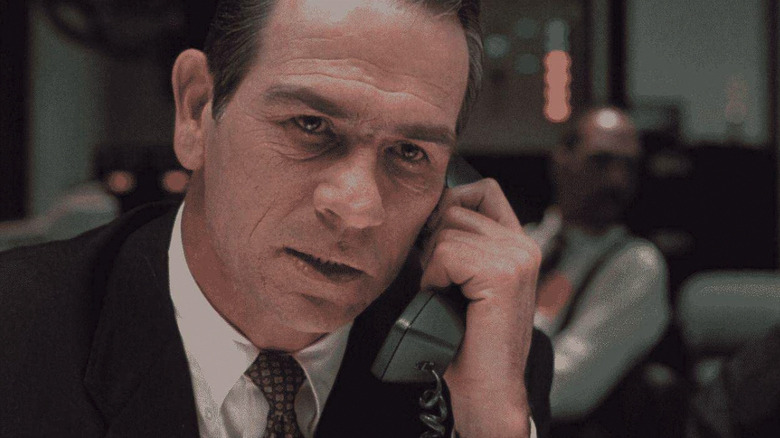
The 1963 TV series "The Fugitive" was a massive success in its initial four-season run, and became something of a pop cultural touchstone. The premise was a grabber: Dr. Richard Kimble (David Janssen) has been arrested and convicted for the murder of his wife, a crime he didn't commit. Dr. Kimble slips the authorities and goes on the lam, eager to track down the real killer and prove his innocence. All he knew was that the killer had one arm. On Dr. Kimble's tail -- the Javert to his Valjean -- was Lieutenant Philip Gerard (Barry Morse), who didn't much care if Kimble was guilty or innocent; he merely sought to apprehend him and let the law work itself out.
30 years later, "The Fugitive" would be adapted into a massively successful and acclaimed feature film starring Harrison Ford as Kimble and Tommy Lee Jones as the re-named Sam Gerard, a U.S. Marshal. "The Fugitive," directed by Andrew Davis and written by David Twohy and Jeb Stuart, was nominated for seven Academy Awards, including Best Picture. Jones won Best Supporting Actor. The film was the second biggest hit of the year, behind only "Jurassic Park." "The Fugitive" made $353 million worldwide (and that's in 1993 dollars).
This year, the film is celebrating its 30th anniversary, and a piece in the latest issue of Empire Magazine details how the "Fugitive" feature film had been optioned decades before its release and went through extensive and repeated changes during its lengthy pre-production. Story beats and character twists were picked up and dropped with staggering regularity over the years, including a notable twist that would have -- completely illogically -- made Gerard the film's villain.
'It Made No Sense'
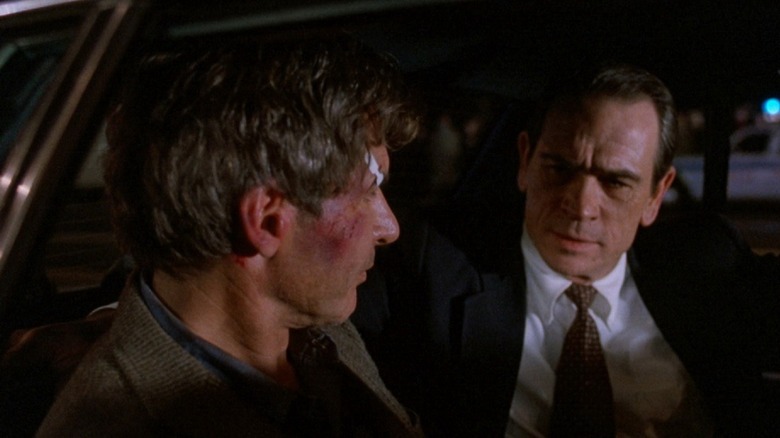
According to the retrospective, producer Arnold Kopelson had been trying to finalize a "Fugitive" movie for a long, long time, and had managed to amass 25 different drafts in just the previous five years. Harrison Ford had already been cast as Dr. Kimble, but "The Fugitive" didn't yet have a script or a director. When Ford saw Andrew Davis' "Under Siege" one weekend in 1992, however, Davis was immediately hired. Davis recalled that his meetings with Kopelson were great, but that the script he was handed was, to use his word, "terrible." In draft 25, Davis revealed, Gerard was the villain. It seems that the extensive rewrites that led up to draft 25 drifted quite a long way from the source material. Davis explained:
"[Gerard had] hired the one-armed man to kill Kimble, after Kimble screwed up an operation on Gerard's wife. [...] It made no sense. But Harrison had committed to the movie, and his viewpoint was: 'Hey - we'll fix the script.'"
And fix it they did. Davis immediately ditched the idea that Gerard should be the villain, as well as the notion that Kimble had done something horribly wrong to warrant revenge. Indeed, with a heroic actor like Ford in the lead role, Davis felt that Dr. Kimble should remain a righteous and innocent character, making the eventual murder accusation all the more shocking. Davis called his sister Josie, a nurse, and she suggested the theme of the movie. Davis recalled:
"I said, 'Josie, what could a doctor do that would get him in a lot of trouble?' She talked to some bright young resident at her hospital, who said, 'What if there's a dangerous new drug on the market and the doctor says this drug is bulls***?' So, that became the plot."
A wise change.
Dr. Kimble Vs. Big Pharma
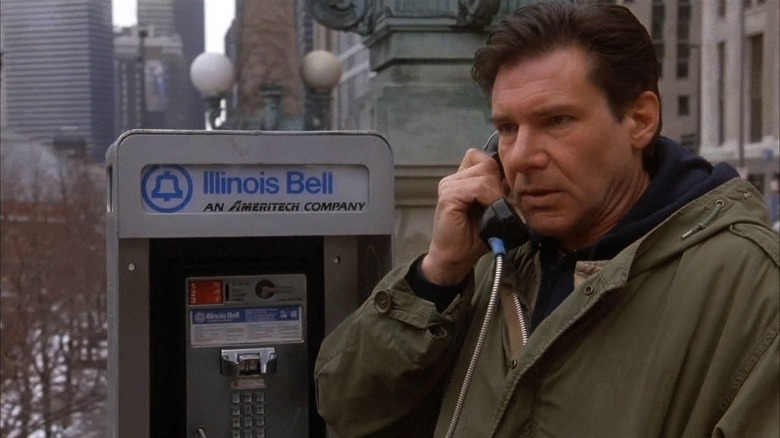
Andrew Davis admitted that, in making a suspicious drug company's sinister dealings the real reason why Dr. Kimble was framed, he effectively made Big Pharma the villain of "The Fugitive." In 1993, it was an interesting plot twist. Since then, the idea of an evil drug company has only become more and more relevant. Davis said that he unwittingly "picked a bad guy that would be around for years."
However, once the general story had been settled on -- and Harrison Ford approved -- rewrites continued during production. Davis and Andrew Kopelson continued to tweak and refine certain elements. Another idea that was mercifully scrapped was a romantic subplot wherein Dr. Kimble instigated an on-the-lam affair with Dr. Anne Eastman, the character played by Julianne Moore. Kopelson felt that a man who is trying to hunt down the killer of his wife should, perhaps, be in mourning for her rather than moving on to a new romantic partner so quickly:
"Julianne Moore plays a doctor, and there was meant to be this scene where Harrison goes back to her place to take a shower. But my producing partner, Peter MacGregor-Scott, said, 'Andy, we can't do this: this guy is in mourning for his wife!' I said, 'You're right.' Kopelson called Julianne to tell her we weren't doing those scenes."
Through massive tinkering, something great was eventually constructed. Most productions keep on altering their final script, often well into shooting, to make sure scenes function and plots make sense. For most major studio releases, dozens of people contribute to the screenplays, even if only one or two writers are ultimately credited. It's almost as if writers ought to be supported in the industry.
Read this next: The 18 Best Action Movie Actors Ranked
The post The Fugitive's Original Script Had A Villain Twist For Tommy Lee Jones appeared first on /Film.
How Off-Grid Solar Power Transforms Remote Villages
Read more of this story at Slashdot.
The Face Paint In Mad Max: Fury Road Tells Its Own Hidden Story
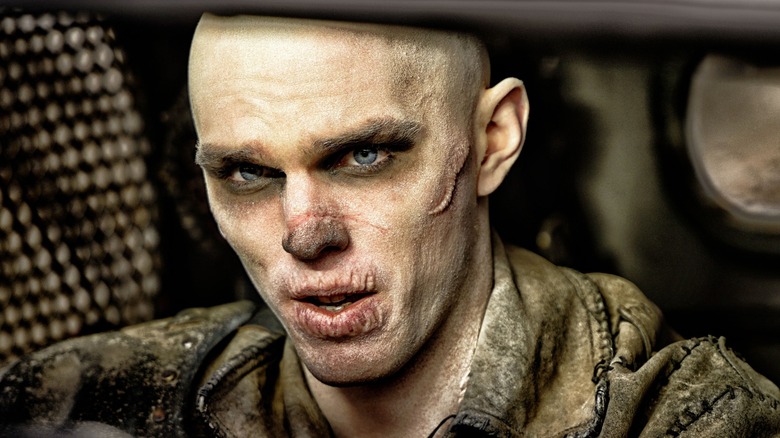
George Miller's "Mad Max: Fury Road" is a beast of a film. A lot of time and relentless effort went into the creation of this bonkers action spectacle, where Miller worked closely with comic-book artist Brendan McCarthy and Nico Lathouris (who appeared in Miller's 1979 original) to bring his vision to life. "Fury Road" presents a story of epic proportions — we are introduced smack dab in the middle of a dystopia, where cult-run city-states are surrounded by barren wastelands and survival is the name of the game. Once Max (Tom Hardy) arrives on the scene, he is quickly intercepted by a group of War Boys, who scream and lug him around to The Citadel with the intention of using his blood for medicinal purposes.
One of the most thrilling aspects of "Fury Road" is that it does not waste any time to set things up, or linger around for audiences to acquaint themselves with its chaotic, bizarre world. We're introduced to Imperator Furiosa (Charlize Theron) and ruler of the desert kingdom Immortan Joe from the get-go, diving right into the heart of rivalry and rebellion as Furiosa frees Joe's five wives from captivity. The world-building occurs at breakneck speed, and a lot is conveyed through visual symbolism alone, such as the startling attention to detail in the split-second shrine scene, which houses steering wheels adorned with a variety of objects.
Several visual details contribute to the overall look and feel of the War Boys, who act as paramilitary forces for The Citadel and are indoctrinated to become fanatical devotees to V8 since a formative age. Even in the aesthetically distinct world of "Fury Road," the face paint that the War Boys wear stands out, and Miller explains that it has a deeper, more meaningful purpose than being an aesthetic choice.
Half-lives
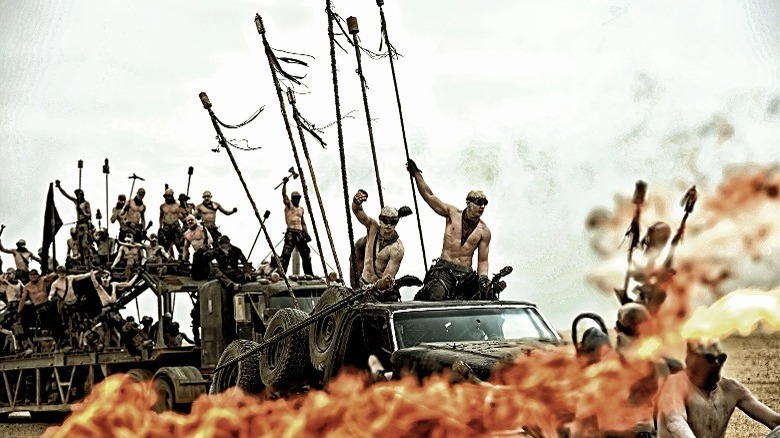
In a conversation with Sydney Opera House about the film's thrilling, arduous journey to the big screen, Miller went into considerable detail about the reason behind the War Boys covering their faces, arms, and torsos in white powder. While this power is also used as medication by Immortan Joe and this ritualistic display is, in part, in reverence to him, Miller revealed that the paint marks them as beings who are on the verge of dying soon, due to some illness:
"...The War Boys have some sort of neoplasm, some sort of disease going on so they're designated half-lives, so they're gonna put all of their effort into dying into some warrior afterlife. So they already are fashioning themselves like skeletons. They don't tattoo themselves with living objects, they tattoo or scarify themselves with car parts because car parts outlast them. And so if you're a War Boy or a half-life, you'll paint yourself white and form some sort of skeletal look."
This also explains the grey clay pigment around their eyes and mouths, as it grants a more gaunt, emaciated appearance, much like a skeleton. In stark contrast, Imperators like Furiosa do not adorn themselves with white paint, but with black on their usually shaved heads. This is because they are full lives, and they need to mark themselves with white the moment they fall ill. Miller also explained that "Max is a full-life ... And no one really picked it up," while stating that "people are reading a lot of iceberg under the tip," just as McCarthy had intended. This adds more layers to the fanatical devotion that the War Boys display, along with their relationship with death and what little choice they truly have when it comes to their actions, and their legacy.
The Ultimate Self-Sacrifice
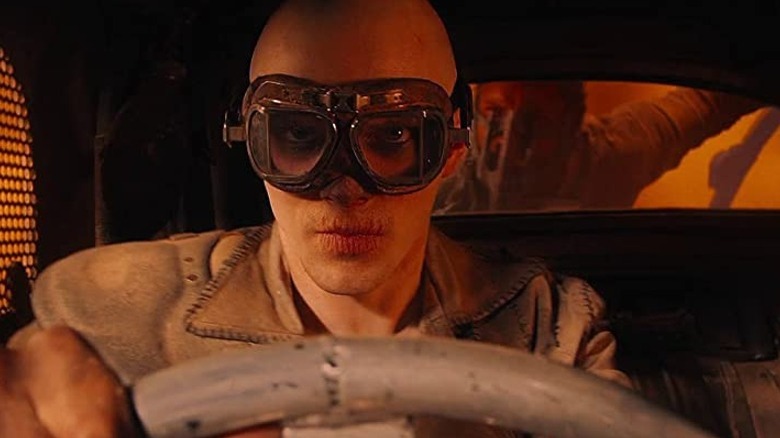
The scarification process adds another layer to the psychology of the War Boys — they view cars as strong, sustainable machines that will outlive their legacy, which leads them to tattoo or adorn themselves with car parts. Raised as adept mechanics who know cars in and out, cars are the only things the War Boys can fix, as they cannot fix themselves or do anything to prolong their already limited lifespans. Moreover, their indoctrination into the cult makes them completely devoted to Immortan Joe's cause, leading death to evolve into an honorable ascension stage of sorts, instead of something to be feared.
This brings us to Nux (Nicolas Hoult), an impulsive War Boy who initially views Max as a blood bag, and the fact that he's accelerating toward death does not help alter his entrenched worldview. The silver chrome spray paint that he uses to mark his mouth doubles as a euphoric drug that will help numb his inevitable death. However, Nux undergoes a tremendous change of heart after Angharad's death, and his guilty conscience spurs him to change alliances when it matters the most. In the end, he sacrifices himself to save everyone — this time, Nux is ready to embrace death not for the promise of an afterlife, but because he wants to save his allies. "Witness me," he says, right before swerving into the canyon.
"Mad Max: Fury Road" is still packed with unexplained lore, which only enhances its appeal as a wild dystopian action offering like no other. This world, both barren and exhilarating, demands in-depth introspection and theorizing from its viewers and earns this from start to finish. Never has an apocalyptic world set in a drab, lifeless desert been this rich and thematically layered.
Read this next: The 14 Greatest Action Movies Of The 21st Century
The post The Face Paint In Mad Max: Fury Road Tells Its Own Hidden Story appeared first on /Film.
12 Underrated Anthony Hopkins Movies You Need To See
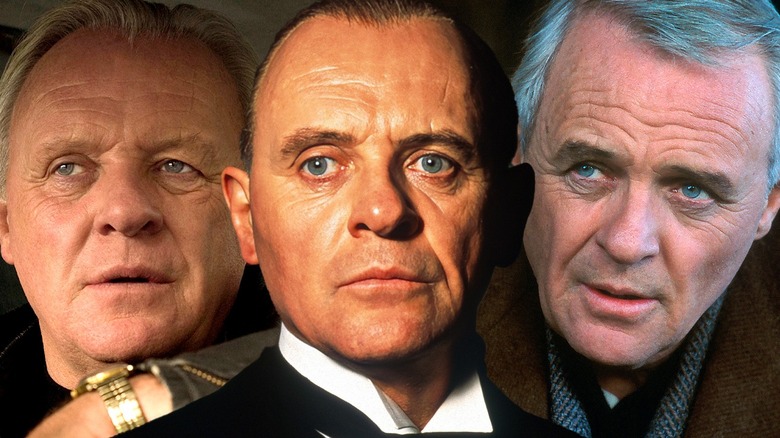
With over 100 acting credits to his name, many of which are bonafide legendary performances, Anthony Hopkins has proven himself time and again as one of the best actors of his generation, and possibly of all time. After graduating from London's famed Royal Academy of Dramatic in 1963, Hopkins began his career on the stage, tackling the bard, as well as classic and modern plays at the Royal Court Theatre and The Old Vic. He also regularly appeared on British television, taking on episodic guest roles in shows like "The Man in Room 17" and "Department S."
In 1968's "The Lion in Winter, " Hopkins had his cinematic breakout role as Richard the Lionheart. Often remembered for the best actress tie between Katharine Hepburn (as Eleanor of Aquitaine) and Barbra Streisand (for "Funny Girl") at the Academy Awards, "The Lion in Winter" saw Hopkins more than hold his own against stalwarts Hepburn and Peter O'Toole. It would be a sign of things to come for the Welsh actor, who has since brought to life some of history and cinema's most enduring characters, including Zorro, C.S. Lewis, John Merrick, and of course, Hannibal Lecter.
Given the number of performances he has delivered across nearly 60 years, it's no surprise that a number of Hopkins' films have been overlooked by audiences and some even under-appreciated by critics. To help fill those gaps, here are 12 underrated Anthony Hopkins movies that you need to see.
Meet Joe Black
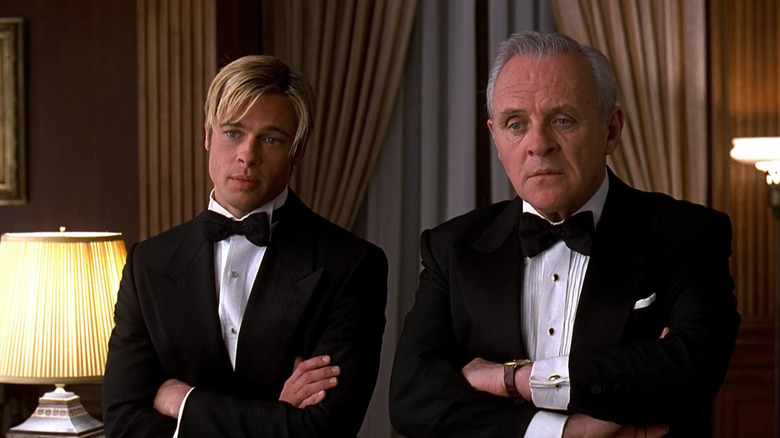
It has always baffled me how much this touching and poignant film was derided by critics when it was released. Directed by Martin Brest, "Meet Joe Black" tells the story of Bill Parrish, a soon-to-be 65-year-old media mogul whose time on Earth is coming to an end. Death appears to Bill in the form of a handsome young man (Brad Pitt), who strikes a deal with Bill after being enamored by Bill's relationship with his daughter, Susan (Claire Forlani). In exchange for more time in this life, Bill will act as Death's guide on Earth.
Sure, there are far too many saccharine moments and the film moves at a snail's pace, but beneath all that languid syrup is a movie rich in thoughtful dialogue about life and our place in the world. The idea that Death painstakingly wants to learn about what makes life worth living is fascinating, and Pitt and Hopkins' performances elevate the script to undeserving heights. "Meet Joe Black" isn't a perfect film by any stretch of the imagination, but its meditation on life, loss, and love warrants a lot more attention and praise than it was given.
The Remains Of The Day
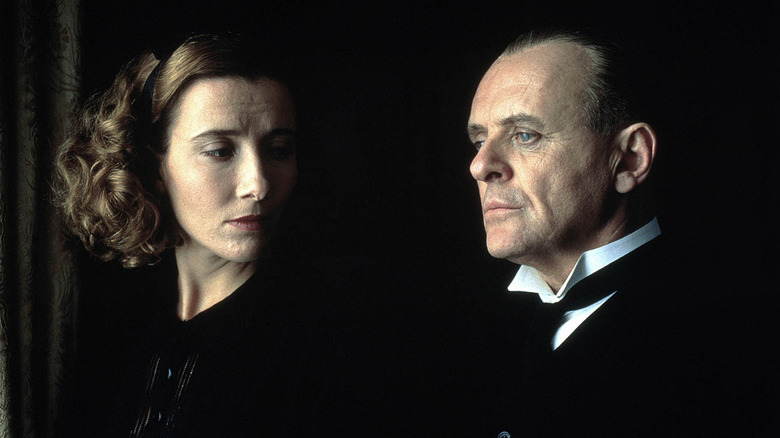
Admittedly, "The Remains of the Day" is an odd choice for a list like this. The James Ivory-directed film was a box office success, nominated for eight Academy Awards (including best picture and best actor for Hopkins), and was named by the British Film Institute as one of the 100 best British films of the 20th century. Its inclusion on the list is simply due to the fact that this film has somehow been lost to time.
"The Remains of the Day" is adapted from Kazuo Ishiguro's impossibly gorgeous novel of the same name, which itself has been well recognized (including winning the Booker Prize in 1989). Perhaps one of the reasons this film has become under-appreciated in the years since its 1993 release is because not much happens across 2 hours. The movie is wildly subtle in its storytelling, mostly existing in Mr. Stevens' (Hopkins) unreliable head -- the butler with a blind devotion to his household to the degree where reality is bent in the name of service. A movie that received its flowers in its day, but whose recognition faded with time, "The Remains of the Day" remains a jewel in Hopkins' crown.
The Edge
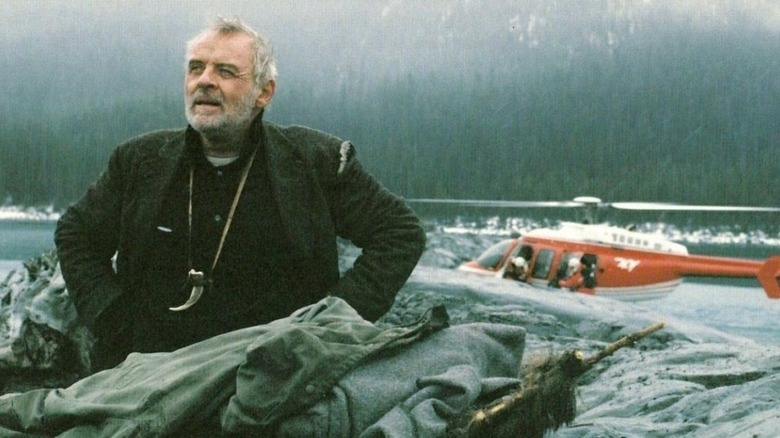
Before Cocaine Bear terrorized campgrounds, Hopkins and Alec Baldwin attempted to outsmart a Kodiak bear after crash-landing in Alaska. A survival thriller, "The Edge" is directed by Lee Tamahori and written by David Mamet, best known for writing "Glengarry Glen Ross." We follow billionaire Charles Morse (Hopkins) and photographer Bob Green (Baldwin), as they face numerous obstacles on their way to reuniting with civilization. Chief among them is a fearsome bear keen on ripping them apart.
"The Edge" offers moments of nerve-racking tension as the elements of the Alaskan wilderness come down on our survivors. What separates the film from others of its ilk, though, is the personal drama and associated revelations that transpire between Charles and Bob. Tamahori and Mamet balance these aspects of the film with a layered nuance, resulting in an action-packed story with a grounded heart. "The Edge" made a minor ripple upon its release, but it's well worth the brawny ride.
The Bounty
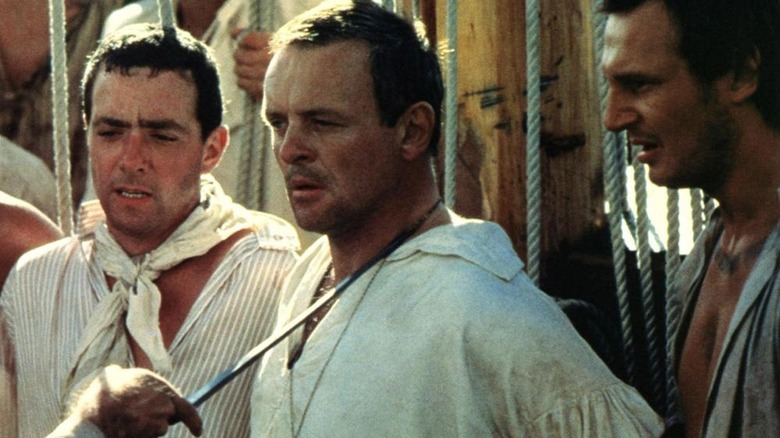
"The Bounty" is a prime example that assembling a cast of the day's best and brightest actors does not a successful movie make. It almost seems impossible today that a historical drama from the 1980s starring Hopkins, Mel Gibson, Laurence Olivier, Daniel Day-Lewis, and Liam Neeson wasn't a draw for audiences (granted, the latter two were just beginning their careers). But alas, while the film earned decent reviews, it simply didn't garner enough interest from ticket buyers -- "The Bounty" was cast out to sea by audiences in 1984, and undeservingly so.
A retelling of the infamous mutiny on the HMS Bounty, "The Bounty" is a film epic in scale, using a fully functional replica of the vessel and shooting locations around the world. An interesting twist lent to "The Bounty" was in Hopkins' portrayal of Lieutenant William Bligh, the ship's commander. Rather than villainizing the officer as had been done in previous cinematic iterations of the event, Robert Bolt's script is far more sympathetic to Bligh. Hopkins is positively brilliant in the part, and while in supporting roles, the charisma and potential of Day-Lewis and Neeson are glaringly evident.
Fracture
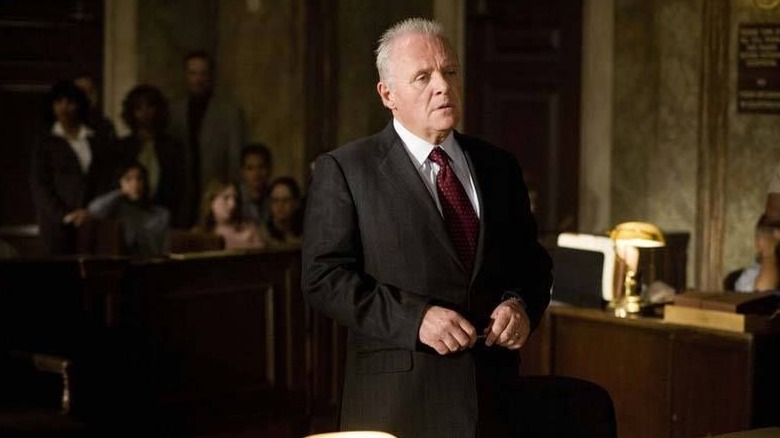
It's without argument that Hopkins is one of the best in the business at delivering sinister. Hannibal Lecter is an obvious example, but Hopkins' turn as Ted Crawford in 2007's "Fracture" is worthy of a mention. Played in a stoic and solemn manner, the character's cruelty is increased ten-fold because of Hopkins' talent at unnerving audiences. A two-hander with Ryan Gosling, the Gregory Hoblit-directed psychological legal thriller sees Gosling as Assistant District Attorney Beachum engaging in a game of cat and mouse with Ted, a man who kills his wife in the opening moments of the film.
Similar to Hannibal Lecter, there isn't any question or mystery surrounding Ted's innocence or lack thereof, but even so, Hopkins' choice to pepper his performance with an amusing playfulness has us second-guessing ourselves. The contrast between Beachum's renewed desire to find justice and Ted's astounding arrogance in the face of criminal proceedings builds an enticing tension that's bolstered by tremendous performances from Hopkins and Gosling. "Fracture" was well-received by critics and made a respectable return at the box office, but for both actors, this is one film that too often goes under the radar.
The World's Fastest Indian
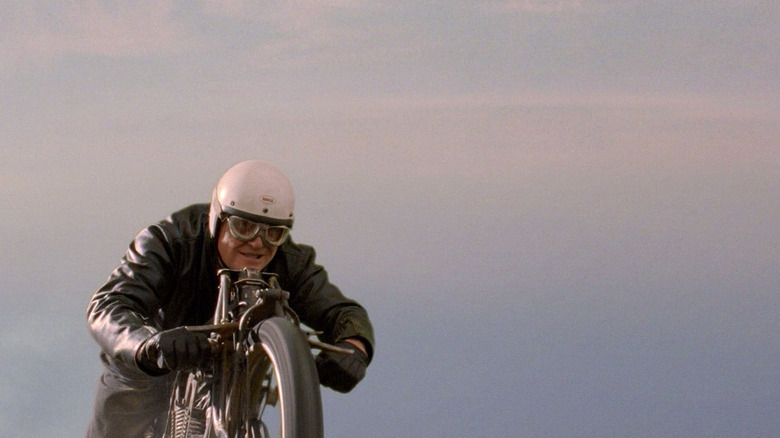
Reuniting Hopkins with his "The Bounty" director Roger Donaldson, "The World's Fastest Indian" is a charming, feel-good sports film about New Zealand speed bike racer Burt Munro. Munro had spent many years modifying his Indian Scout motorcycle and found success in New Zealand and Australia's racing circuits. By 1967, when the film picks up, Munro is ready to realize his dream of conquering the U.S. -- with his eyes set on the Bonneville Speedway.
"The World's Fastest Indian" was well-received in New Zealand (in spite of Hopkins deciding not to adopt a Kiwi accent and instead using his native Welsh lilt), but failed to make a splash elsewhere. Accent choices aside, Hopkins lights up the screen as the New Zealand folk hero. Maybe because we're too used to seeing Hopkins take on heavy (and often darker) characters, one of my favorite aspects of the film is seeing the lightness and unabashed joy the actor clearly takes in bringing Munro to the screen. There's a refreshing coziness to his performance that endears the racer to audiences unfamiliar with his story, making it a movie well worth the effort to seek out.
Magic
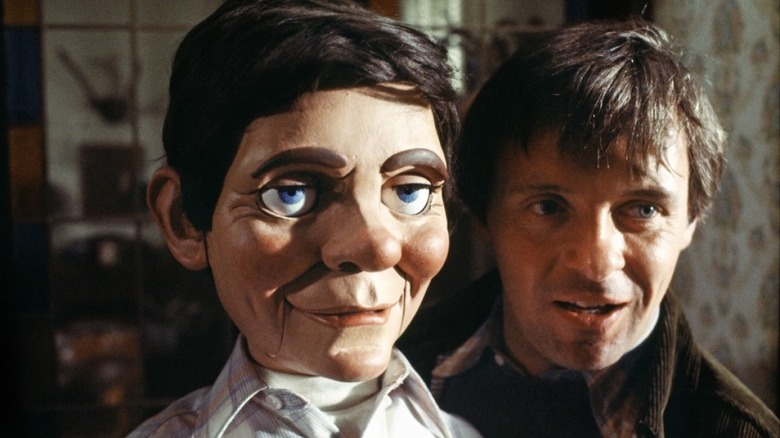
The legacy of Hopkins' Hannibal Lecter really can't be understated enough. He's a character so terrifying and so perfectly portrayed by Hopkins that, in a career with too many impeccable performances to count, one greatly overshadows the others. This is the only reason I can attribute to Richard Attenborough's "Magic" not getting the love it deserves.
A film that I watched at a too-young age, "Magic" scared me to the point that I still feel uneasy about ventriloquists and their dummies. Hopkins plays a failed magician, Corky, who turns to ventriloquism to revive his career. Corky and his dummy, Fats, begin to find some success, even being offered a television spot. When Corky duplicitously rekindles his romance with a former sweetheart (played by the renowned Ann-Margret), Fats becomes jealous and displeased. A strange movie that explores mental illness and the ego to an extreme, "Magic" is a delirious tale with Hopkins delivering a unique turn.
Nixon
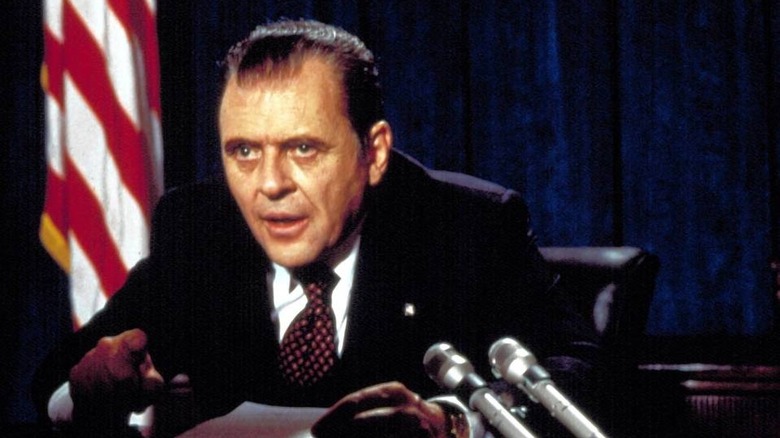
Four years prior to "Nixon," Oliver Stone released "JFK," exploring the titular president's assassination and garnering criticism for embracing the many conspiracy theories surrounding the event. Conceivably, this left audiences wary of what Stone's treatment of former President Richard Nixon would entail. It would appear that Stone did learn something from "JFK," as he begins "Nixon" with a disclaimer that the film is "an attempt to understand the truth" -- carefully, and pointedly, separating itself from the actual truth.
Regardless, Stone's attempts to understand Nixon as a man, warts and all, rubbed many the wrong way with statements given by the Richard Nixon Library and even Walt Disney's daughter. The film would go on to receive four nominations at the Academy Awards, including one for Hopkins' performance as Nixon, but only grossing $13.6 million domestically against a reported $44 million budget. Although the accuracy of "Nixon" has been skewered many times over, it remains a fascinating depiction of a controversial figure, backed by an impressive performance by Hopkins.
Amistad
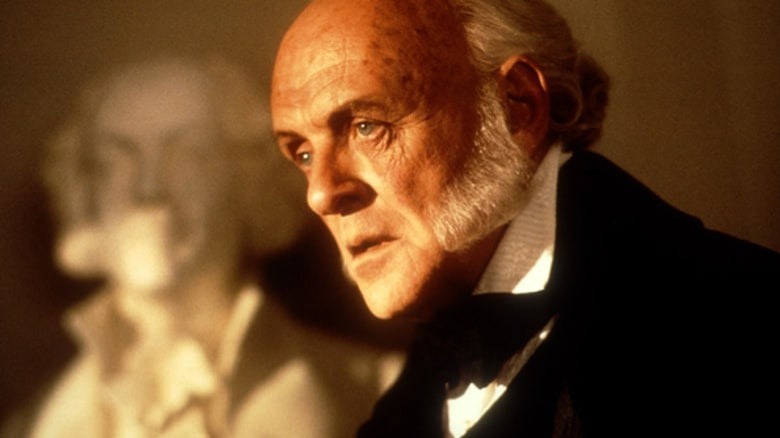
Hopkins received yet another Academy Award nomination for his turn as former president John Quincy Adams in Steven Spielberg's historical courtroom drama "Amistad." Telling the story of the Spanish slave ship, La Amistad, and the slave revolt that took place on board by Mende captives, "Amistad" concerns itself mostly with the legal battle that occurred afterward. The U.S. wanted to bring piracy and murder charges against the slaves, but the Spanish government supported two of their citizens in the case as owners of these individuals, creating a potential diplomatic incident.
Although "Amistad" became a critical darling and was acknowledged by various awards bodies and critics groups, it failed to have much of an impact at the box office. Given the run Spielberg was on in the '90s, it's understandable that at least one of his films may not appeal to the masses. In a sense, the same issue is at play when considering "Amistad" in the years since its release: both Spielberg and Hopkins have developed such illustrious careers, films like "Amistad" fall by the wayside.
International Velvet
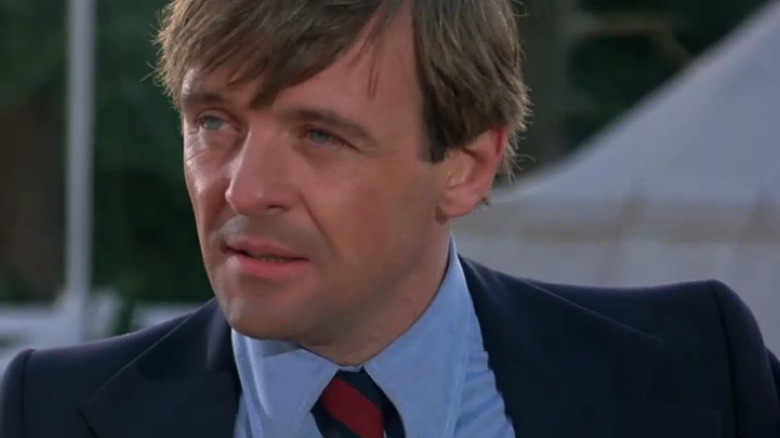
A timeless classic, 1944's "National Velvet" is a certified tear-jerker that introduced the world to Elizabeth Taylor. As is usually the case, a sequel wasn't necessary, but happened anyway, albeit 34 years later. The follow-up, "International Velvet," focuses on Sarah Velvet Brown (Tatum O'Neal), who is forced to move to England from Arizona to live with her Aunt Velvet Brown (the role Taylor originated and played by Nanette Newman in the sequel) after the untimely death of her parents.
While "International Velvet" didn't quite hit the emotional notes or dramatic overtures in the same way as its predecessor, the film remains an old-fashioned family film with plenty of heart and joy to go around. Hopkins takes up the role of Captain Johnson, Sarah's coach on the British Olympic team, and Christopher Plummer rounds out the ensemble playing John, Velvet's partner. It may not be a classic in its own right, but the strong cast, beautiful cinematography, and moving score make "International Velvet" an endearing coming-of-age tale.
The Bunker
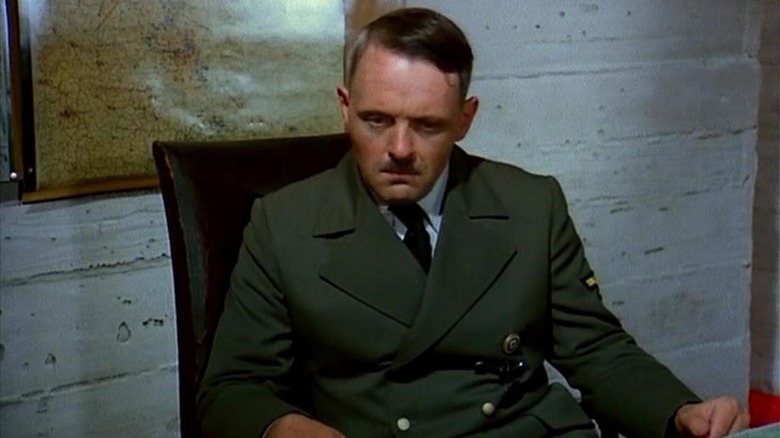
This one may be cheating, as Hopkins won an Emmy for his performance in "The Bunker" as Adolph Hitler, but it's precisely because it is a made-for-TV movie that the film qualifies for this list. Given the nature of television in 1981 (i.e. not streaming), following the initial broadcast, a film like "The Bunker" would need to be caught on re-runs. And what a shame for those who missed it, as "The Bunker" features one of Hopkins' finest performances.
The story takes place between January and May 1945, reenacting key events from within the Führerbunker in the last few months of Hitler's life. What impresses the most about "The Bunker" isn't the accuracy of the production or even the accuracy of Hopkins' disturbingly visceral performance. Where the film excels is the glimpse into the psyche of one of humanity's most inhumane inching towards inevitable failure. Hopkins brings to the fore the cracks and vulnerabilities of the Führer in his final days as he descends into a desperate madness.
Legends Of The Fall
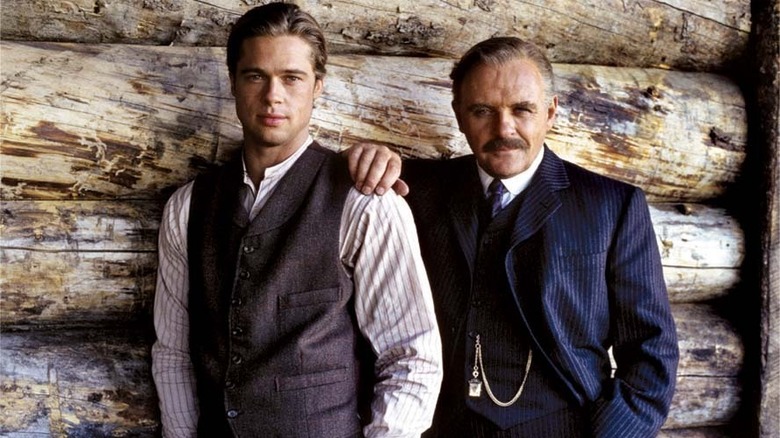
It seems that whenever Anthony Hopkins and Brad Pitt join forces, they create under-appreciated magic that divides audiences and critics. Directed by Edward Zwick, "Legends of the Fall" follows the lives of the Ludlow brothers, Alfred (Aidan Quinn), Tristan (Pitt), and Samuel (Henry Thomas), and their father Colonel William Ludlow (Hopkins) across multiple decades as they confront love, life, and brotherhood together and apart.
There is an eloquence to Susan Shilliday and William D. Wittliff's script that is echoed and lifted by the truly exemplary performances from the entire ensemble with Pitt and Hopkins once again leading the way. The stunningly gorgeous film (for which John Toll won the Academy Award for best cinematography) can fall on the side of schmaltzy and corny at times, but ultimately, its dissection of a family's struggle with their circumstances and each other is moving and affecting in all the right moments.
Read this next: 12 Best Performances In Steven Spielberg Movies
The post 12 Underrated Anthony Hopkins Movies You Need to See appeared first on /Film.
Qbits 30 Meters Apart Maintain Entanglement Across Refrigeration Systems
Read more of this story at Slashdot.
The titular princess deserves better in The Legend of Zelda

Drop the monarchy
As the prophecy has foretold, evil will rise, time and time again, and a hero will show up to make it stop. Their job would be a lot easier if there wasn’t also a third person in the prophecy who, time and time again, makes everything worse.
Princess Zelda is one of the most vexing supporting characters in video game history. Being type-cast is bad enough, but when the narrative actually does have her in a more prominent role, it's almost always her duty to screw up and make the problem bigger. She's there simply to give Link more problems to solve. The Legend of Zelda may have her name in the title, but the series would be a lot better off completely rethinking the character or simply dropping her completely.
While The Legend of Zelda: Majora’s Mask is one of my favorite stories ever told in a video game, I generally don’t hold the series in high regard in terms of storytelling. Don’t get me wrong, it’s one of my favorite properties in gaming, having been the initial spark for my passion for the hobby back with the NES original. However, that’s largely due to a myriad of other reasons and not because it tells good narratives. It rarely does, and that’s partly the fault of Princess Zelda.
From here on out, I’m going to be talking about the plot of various titles in the series in vague terms. Consider this your spoiler warning.
[caption id="attachment_374983" align="alignnone" width="640"]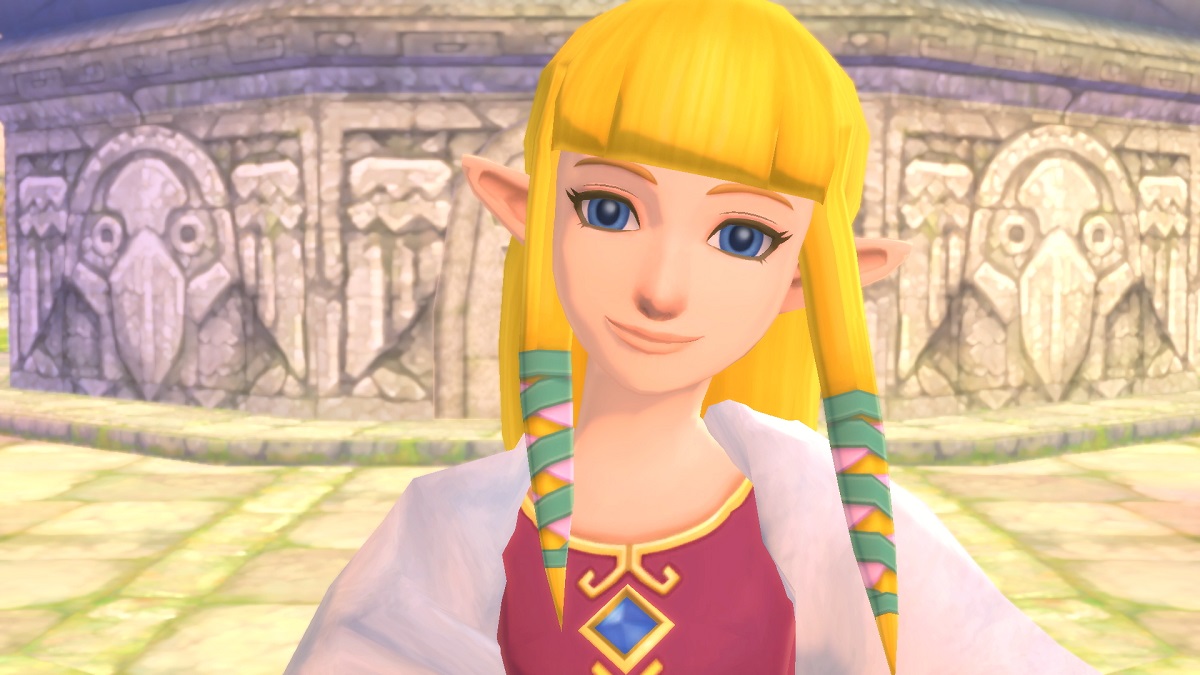 Image via Nintendo[/caption]
Image via Nintendo[/caption]
Spoiler Warning
I’m not going to victim blame here. Getting kidnapped seems to be the most common pastime of princesses, right alongside dating and animal husbandry. I’m not going to blame her for starting her career by being kidnapped. Nor do I have a problem with her being asleep for the entire next title. It gets a little absurd in A Link to the Past when she’s kidnapped, saved, then quickly kidnapped again, which might be why she was omitted from The Legend of Zelda: Link’s Awakening.
But when we get to 1998’s The Legend of Zelda: Ocarina of Time, Princess Zelda is shown as the key factor in the Kingdom of Hyrule’s woes. She enlists a child to steal three sacred artifacts, who then opens the door so the main bad guy gets unlimited power. She says that dreams made her do it, which was exactly my excuse when I was found next to the charred remains of Old Man O’malley’s barn with a pack of matches. The only reason the world wasn’t doomed for certain is because of Link and a clause in the Triforce’s contract.
Since then, Ganon has been running rampant, and she hasn’t really done much to stop that. Everything falls on Link, which is his job. I don’t even know why she’s even part of the prophecy. The best she really does to help is hold the bad guy still for free shots. She’s sort of the conduit for the wisdom of the Gods, even though the Gods don’t really seem that helpful either.
For all we know, it’s a case of the telephone game. The Gods tell her one thing, and she passes the absolutely wrong information along to the eternally suffering hero. Maybe that’s why, in Breath of the Wild, the Gods are done talking to Princess Zelda. Why would they bother? She only takes the wrong meaning and makes things worse. She can do that on her own. And she did.
[caption id="attachment_291177" align="alignnone" width="640"]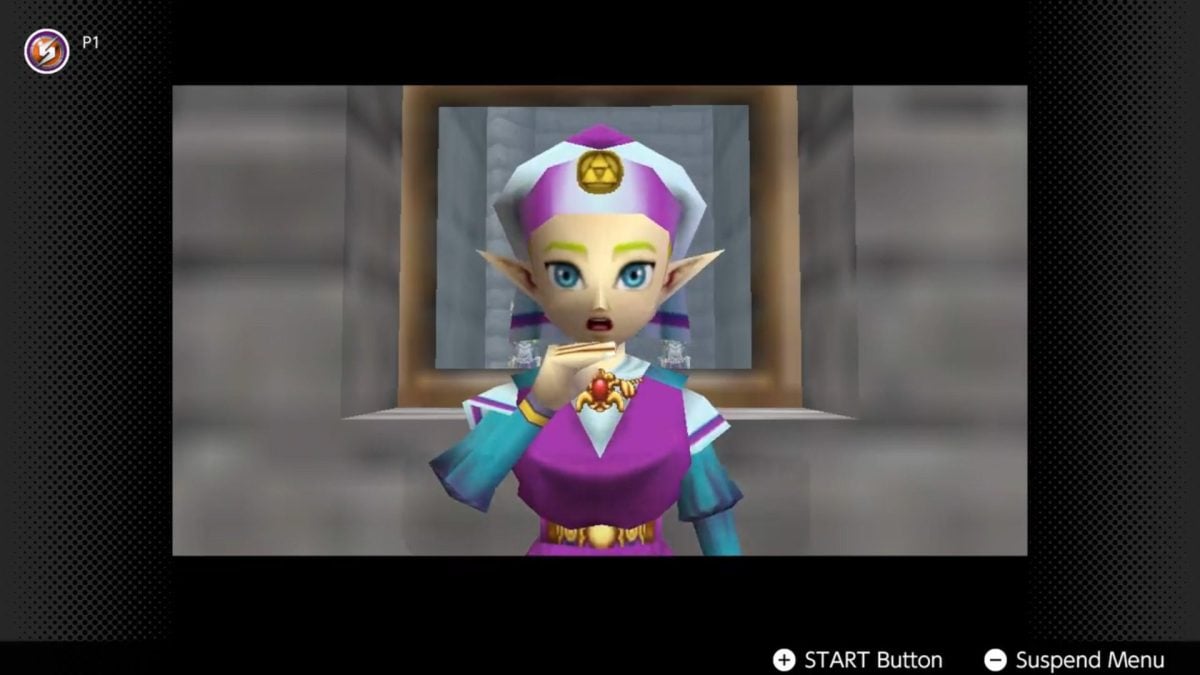 Image via Nintendo[/caption]
Image via Nintendo[/caption]
A touch-up
The Legend of Zelda is a series with a tonne of great female characters, and Zelda herself isn’t one of them. Wind Waker was perhaps the first time they attempted to give her a more adventuresome, less damsel-y side, but she only stays that way for about half the game. The moment she puts on her traditional dress (and make-up, weirdly), she turns into a personality-devoid damsel.
In Breath of the Wild, she spends the whole backstory fucking around and subsequently finding out. Bizarrely, this is Zelda at sort of her best, as she at least has some humanity. She’s realistically flawed, which is more depth than she’s been previously provided. It just seems like a bizarre course correction by changing from a hapless victim to the ultimate screw-up and then still reverting her back into the exact same damsel she was the whole game.
Skyward Sword perhaps had her at her most capable, but even there, she winds up just acting like a key. And then things still don’t go according to plan, and the very thing she’s trying to prevent from happening occurs anyway. She’s dependable in that regard, at the very least.
[caption id="attachment_373865" align="alignnone" width="640"] Image via Nintendo[/caption]
Image via Nintendo[/caption]
The cyclical symptom
If we’re being honest, the major issue with the narrative of The Legend of Zelda isn’t Princess Zelda herself, but she’s a visible symptom of the issue. She’s the bubons of the black death. The real issue with the series is its steadfast adherence to cyclical storytelling, which wasn’t even established until maybe Wind Waker at the earliest.
I hate prophecy as a storytelling mechanic unless it’s being subverted. Telling people what is supposed to happen is predictable by design, and I don’t know why anyone would opt for that. However, in The Legend of Zelda, we’re stuck with the three factors of Courage, Power, and Wisdom, and it seems that Wisdom is constantly calling in sick.
But even within the confines of those restrictions, Princess Zelda doesn’t need to always be such a screw-up. She could be framed as the hero or even the villain. Wisdom isn’t always wielded for the better of others. Maybe there could be a Zelda title where she manipulates Link and fools Ganondorf for her own gain. Having the Wisdom part of the Triforce always needing to be saved kind of just makes it seem like the series is calling the smart person a nerd.
[caption id="attachment_373604" align="alignnone" width="640"] Imagve via Nintendo[/caption]
Imagve via Nintendo[/caption]
Where does Princess Zelda go from here?
There are some exceptions to this. The Legend of Zelda: Spirit Tracks allowed her to be a more active participant in the story, as much of the game has her adventuring alongside Link. Mostly. Her body is taken from her, but her spirit is able to participate in her own rescue, and she manages to avoid making things worse. Though interestingly, Ganondorf isn't present, meaning the cyclical prophecy angle isn't involved in the narrative.
There are also the more notorious examples on the CDi where she took the lead role. Zelda: The Wand of Gamelon and Zelda's Adventure were both developed without Nintendo's involvement. While they're both unique in the way they swap Princess Zelda to be the primary protagonist, they're both victims of being developed for a platform that wasn't very well suited to games. They're hardly a good metric to judge the potential of a hero Zelda.
I’d rather just have the series move away from including her altogether. Having her here means that the games always have some sort of connection to the Royal Family of Hyrule and the kingdom itself. I’ve always sort of wanted to see what’s out beyond.
It could be argued that it’s hard to call the series “The Legend of Zelda” when she’s not included, but it’s always been a bit of a misnomer. The narrative often puts the emphasis on the three central characters and not just her, with Link being the primary focus. We’ve also had titles like Majora’s Mask and Link’s Awakening where she plays little or no role at all.
I also know that moving away from the prophecy angle would likely meet resistance because that’s also right there in the title. And yet, again, not every Zelda game has a prophecy, once again showing how vestigial it is. None of this is required in the same way that there’s nothing final about Final Fantasy. Old standards are being clung to, even when they’re detrimental.
[caption id="attachment_370384" align="alignnone" width="640"]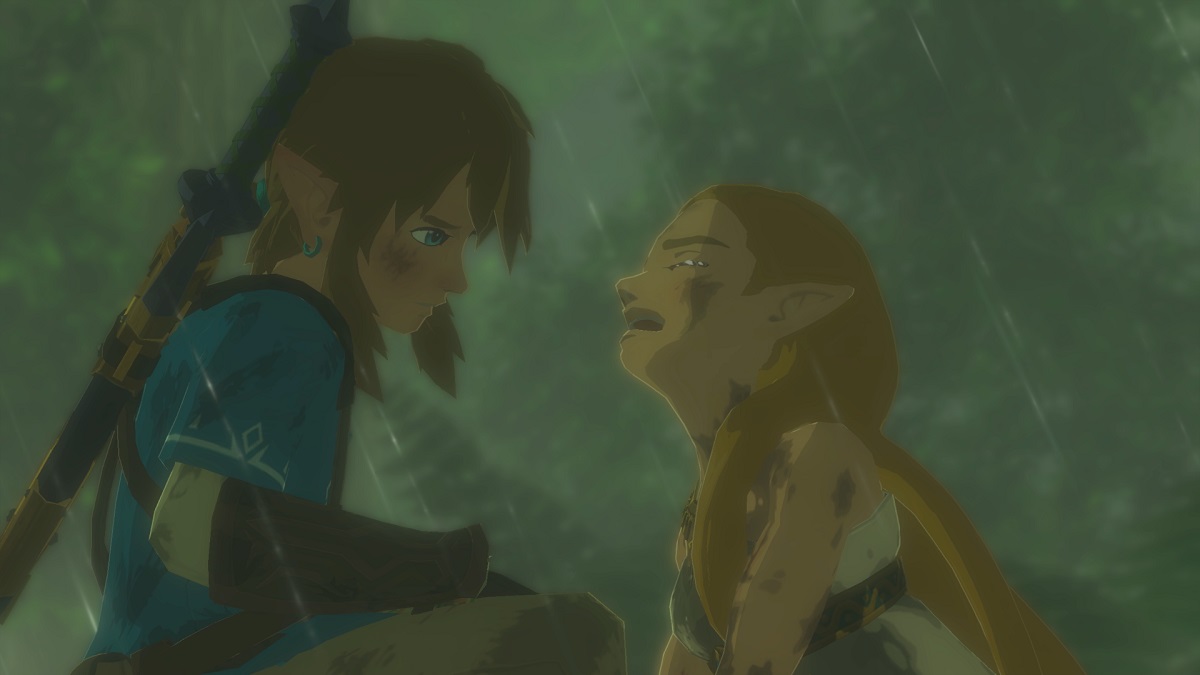 Image via Nintendo[/caption]
Image via Nintendo[/caption]
Fine, just fine
As I said, I love The Legend of Zelda, but I’ve had my frustrations with the series. My most monumental gripe is with its constant fumbling of narratives. The fact that there’s a published timeline trying to tie all the games together causes the bile to rise in the back of my throat every time I think of it.
There’s a lot of possible freedom in the game’s fantasy universe that hasn’t been tapped, could still be tapped within the restrictions the series’ various storytellers have erected, but could be better explored if they dropped them entirely. Majora’s Mask was far and away the best story the series ever had, and it didn’t even take place in Hyrule. Link’s Awakening, while being simplistic in a way that was common for the time period and platform it came out on, still had more emotional depth and mystery than a lot of the more complex attempts.
At the same time, if the series never gets any better at telling stories, that’s fine, I guess. I play Zelda games because they make glass bottles seem like the most useful item in the universe. I don’t play them to have my thoughts provoked. For that matter, I’m even of the mindset that Breath of the Wild was the best the series has been since Wind Waker, but storytelling isn’t part of it.
I just want the series to move closer to whatever might be perceived as perfection, and to start with, they should drop the Monarchy.
The post The titular princess deserves better in The Legend of Zelda appeared first on Destructoid.
Microsoft Aims For Greater Script Execution Control On Linux
Yellowjackets' Production Designers Are Very Mindful About Keeping Fans Guessing
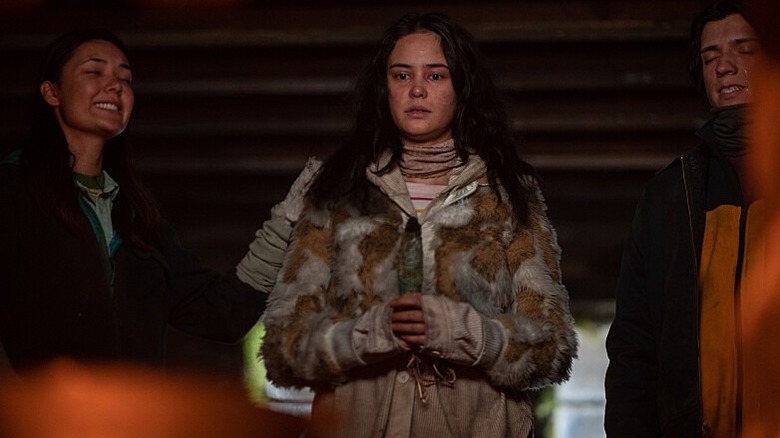
Spoilers for "Yellowjackets" follow.
Like "Lost" before it, "Yellowjackets" has cultivated a fandom that thrives on piecing together the show's mysteries. The keystone mysteries go back to the Pilot — who is the girl killed in the series' opening scene by falling into a spiked pit? In turn, who are the masked girls who butcher her? The only identity we know for sure is the one with the carpet-like mask who serves the meat to the others — she unmasks herself at the end of the Pilot and turns out to be Misty (Samantha Hanratty).
Even the show's cast has been theorizing right alongside their fans. This means the show's creators work extra hard to keep the surprise alive — and not just the writers either. During season 1, costume designer Marie Schley spoke with GoldDerby about her process and inspirations. Interestingly, Schley notes that the story was written around costume requirements: "For storytelling purposes, we couldn't see who these people were, that's why we had to have a mask. And so it kind of led to the development of whatever this ceremony is."
In designing the masks, Schley noted the idea was that each of the girls' masks corresponds to a specific animal — rabbit, skunk, etc. — while Misty's mask was meant to look like a veil. The so-called "Antler Queen" is meant to be "less amorphic" (and indeed, recent hints suggest the Antler Queen could be something more than human). However, underneath the masks are hints of the girls' original clothes. Schley says this is where she saw opportunities for misdirects.
Identifying Clothes
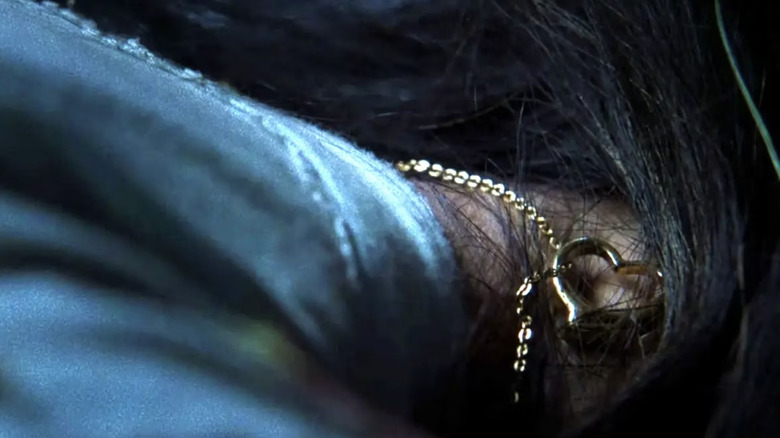
The Pit Girl is mostly free of identifying costume characteristics — she only wears a white nightgown during her death. Mostly is the key word though, because after she falls to her death, there's a close-up of a golden heart-shaped necklace chained around her neck. It wouldn't be a huge leap to then conclude that the owner of that necklace is Pit Girl.
The necklace owner turned out to be Jackie (Ella Purnell), but it was a misdirection. Jackie did die and was posthumously eaten, but she's not Pit Girl. Shauna (Sophie Nélisse) currently has the necklace, but we've known from the beginning that she gets out of the wilderness alive. That means the necklace will certainly be changing hands, which removes any certainty about the fate of its owner.
Schley also noted how the Skunk-masked girl who looked down on the dead Pit Girl was wearing pink Converse sneakers. This meant the costume team had to have the sneakers appear beforehand, but they couldn't be tied to a specific character. This turned out easier than you might expect due to the show's setting. Schley explained, "They would be sharing their clothes anyways, sharing their resources as they're living there, grabbing what they can."
It should be noted that Schley left "Yellowjackets" after season 1, but her successor Amy Parris has the same attention to detail. Parris recently spoke to the Daily Beast about balancing an "authentic 90s feel" to the costumes with a need for realism. She explained:
"I could only really incorporate a little bit more in outerwear, because this season they're out there in the winter [...] So, instead of imagining what their winter coats were, it was a question of, "How many light layers can we get away with?"
After all, even teenage girls wouldn't pack 19 months' worth of winter clothes.
Circumstantial Evidence
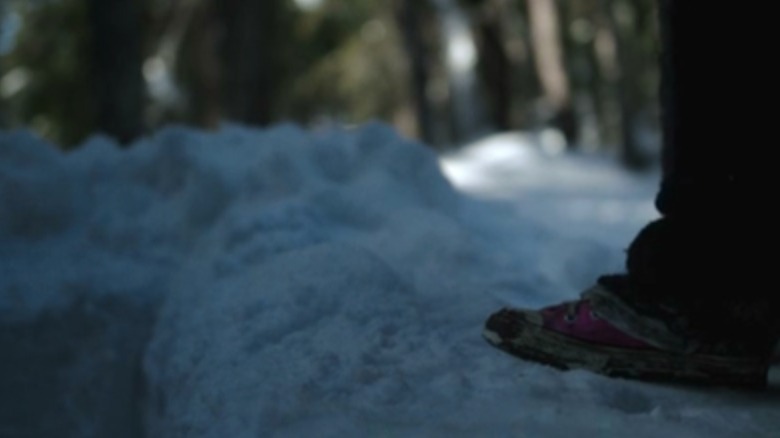
The knowledge that the "Yellowjackets" creative team is trying to throw fans off the truth's scent makes any "evidence" suspect. Even so, theories are half the fun with a show like this (so long as you accept that your ideas can and will turn out to be wrong). So, can we pierce together some answers with what the show has given us?
The Pit Girl is likely one of the Yellowjackets who, as of late season 2, is still alive in the 1996 segments but hasn't shown up in 2021. The Pit Girl also had light-ish skin and black hair. That probably narrows it down to Mari (Alexa Barajas) or Gen (Mya Lowe). What about her killers? Lottie (Courtney Eaton/Simone Kessell) has been heavily telegraphed as the Antler Queen but that's still not set in stone. Some have theorized that since present-day Shauna (Melanie Lynskey) has a rabbit toy collection (and killed/cooked a rabbit in the Pilot), that means she's the butcher in the rabbit mask. Again, though, there's currently no way to say for sure.
"Yellowjackets" is rarely a show where things are exactly what they appear to be and the costume design team has made sure of it.
New episodes of "Yellowjackets" stream on Showtime every Friday and air on television every Sunday.
Read this next: Every Yellowjackets Main Character, Ranked
The post Yellowjackets' Production Designers Are Very Mindful About Keeping Fans Guessing appeared first on /Film.
12 Best Owen Wilson Movies, Ranked
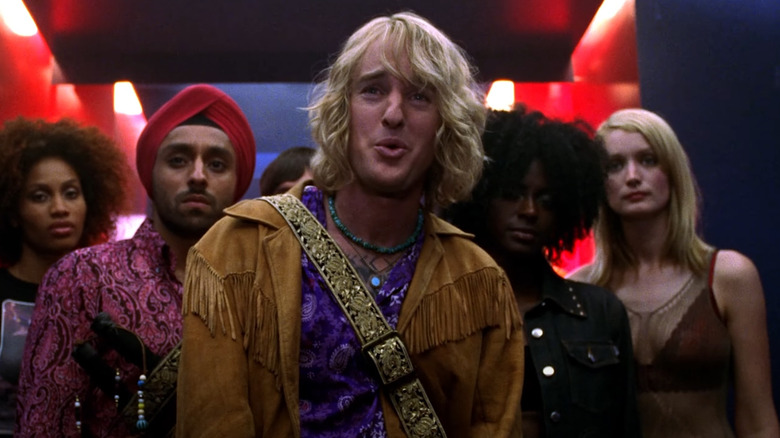
Who doesn't love Owen Wilson? In the late '90s, the blond star burst on the scene in Wes Anderson's "Bottle Rocket," snuck into big productions like "The Haunting" and "Armageddon," and then hit the big time when he teamed with Jackie Chan for the blockbuster "Shanghai-Noon" and its sequel. Since then, Wilson has expanded his portfolio with instant classics like "Zoolander," "Wedding Crashers," and "Midnight in Paris," and continues to show off his knack for lighthearted comedy in films such as "The French Dispatch," and the Marvel Disney+ series, "Loki."
Wilson even has his own animated franchise, Disney/Pixar's "Cars," in which he plays Lightning McQueen, a role he's returned to various times, including the California Adventure theme park ride. There's nothing he can't do, and his careful project selection typically ensures quality despite a small handful of duds during his nearly three-decade stay on the Hollywood A-list.
Which of his films is the best? I'm glad you asked because I put together a list of my favorite Owen Wilson movies, ranked from worst to best. Let's do this!
Marley & Me
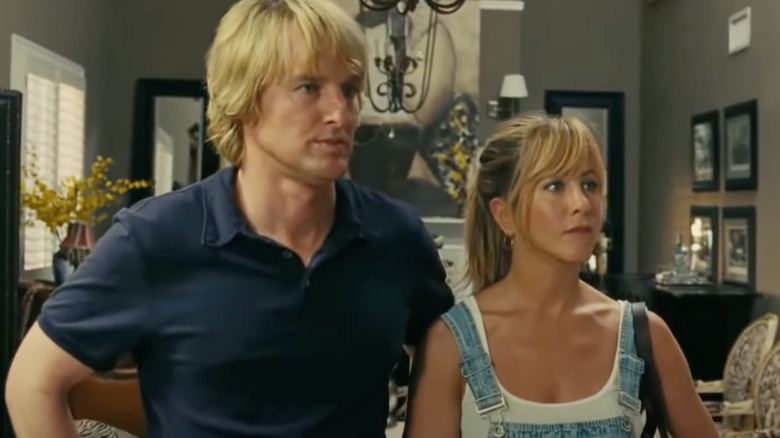
Owen Wilson lends his quirky humor to "Marley & Me," a good-natured comedy about a family's life-long relationship with their pet Labrador. On the surface, this David Frankel-directed pic is little more than your average by-the-numbers dog comedy, ala "Beethoven." Writers Scott Frank and Don Roos (adapting from John Grogan's memoir) hone in on Wilson's character, exploring his triumphs and failures as a budding newspaper columnist, father, and pet owner. We see him struggle early on as a news reporter before a flash of inspiration leads him to write stories about his neurotic dog, Marley, a move that results in fame and success.
Sporting a terrific supporting cast, including Jennifer Aniston and the always dependable Alan Arkin, "Marley & Me" dishes out a plethora of life lessons that every parent and pet owner can identify with. A terrific montage zips through two years of Wilson's life and perfectly captures his frustrations and joy. It's rather illuminating.
That said, "Marley" is, perhaps, a little too conventional for its own good. Dramatic story beats, such as Aniston's miscarriage, are quickly glossed over. The script crams a lot of material into a 115-minute runtime, resulting in something akin to whiplash. At times, director David Frankel veers into sitcom territory and leans too hard on broad humor.
Regardless, Wilson is in fine form and displays amazing chemistry with Aniston. It may not be a great comedy, but "Marley & Me" delivers where it matters most.
Armageddon
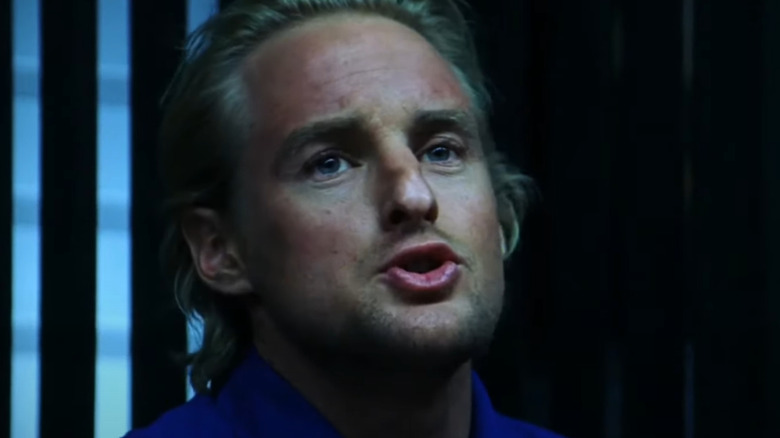
Depending on who you talk to, "Armageddon" is either a rambunctious example of everything wrong with Hollywood or the most awesome blockbuster ever made. I sit in the latter camp and consider Michael Bay's disaster epic one of my great guilty pleasures. This relentless, high-octane thrill ride knocks the brain with infectious energy and overt stupidity.
"Armageddon" is big, loud, dumb fun — the highest example of "check your brain at the door" cinema. Where else will you find a group of blue-collar oil drillers, led by Bruce Willis and Ben Affleck, sent into space to stop an asteroid? Say what you will about its clunky script, but "Armageddon" deserves high praise for executing its goofy premise with a straight face.
Wilson has a small-ish part as Oscar, the slow-talking, cowboy-hat-wearing member of Willis' party, who bites the dust early but still makes an impact thanks to a couple of significant comedic bits. Speaking with Affleck's character during one of the numerous montages, Wilson suggests he's the Han Solo of the group. "If anybody's Han Solo, it's me," Affleck retorts. "And you're Chewbacca." "Chewy," Wilson says incredulously. "Have you ever seen 'Star Wars'?"
"Armageddon" may be little more than an overproduced blockbuster. Still, it's a good time. So sit back, relax, and enjoy the Bayhem.
Masterminds
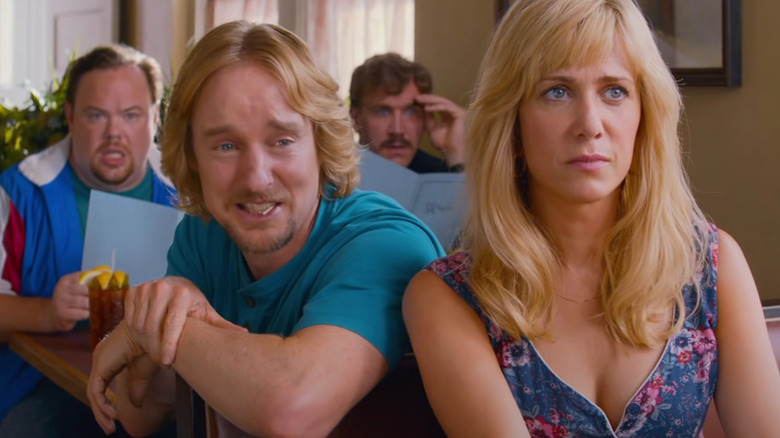
When it comes to quirky comedies, you won't find one much odder than "Masterminds." Deploying the same outlandish humor that made "Napoleon Dynamite" and "Nacho Libre" memorable, director Jared Hess introduces audiences to a colorful cast of dimwitted criminals who team up to rob a bank.
Starring Zach Galifianakis, Kristen Wiig, Owen Wilson, and Jason Sudeikis, "Masterminds" failed to generate much heat at the box office and wasn't exactly a hit with critics (just 34% awarded the pic with a positive score on Rotten Tomatoes), which says to me they didn't get the joke. While far from perfect and a little too weird for casual audiences, this 2016 comedy is excellent. Galifianakis and Wiig have a field day as the "brains" of the operation, while Wilson plays a sleazy partner who attempts to have his teammates whacked by Sudeikis' hitman.
It's all wacky fun for those who can stomach Hess' style. So count me among those who consistently return to "Masterminds" for a lighthearted farce to sweep the blues away.
Cars
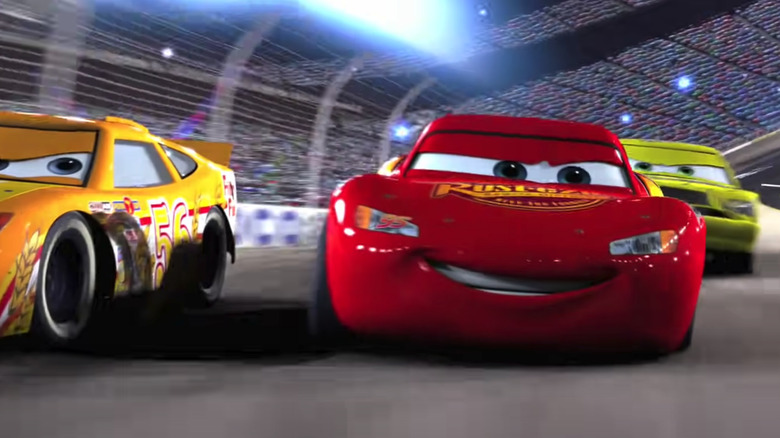
It was only a matter of time before Owen Wilson lent his voice to an animated feature. Thankfully, the clever folks at Pixar Animation Studios found the perfect role to capture his offbeat mannerisms — the 2006 adventure "Cars." While not as memorable as the studio's best efforts, this adorable four-cylinder tale charms as a robust, brightly colored, beautifully animated character study of one car's quest for relevance.
Wilson voices Lightning McQueen, the brash up-and-coming superstar of the racing circuit in a world populated by automobiles. After a random detour lands him in a small town hidden in the American wilderness, McQueen must overcome his selfish instincts to become his generation's greatest racer.
"Cars" boasts an all-star cast (namely Wilson, Paul Newman, Bonnie Hunt, Larry the Cable Guy, and Michael Keaton) with beautiful designs and a simple but positive message kids can digest without much effort. In short, this "Rocky"-esque picture delivers where it matters most.
Bottle Rocket
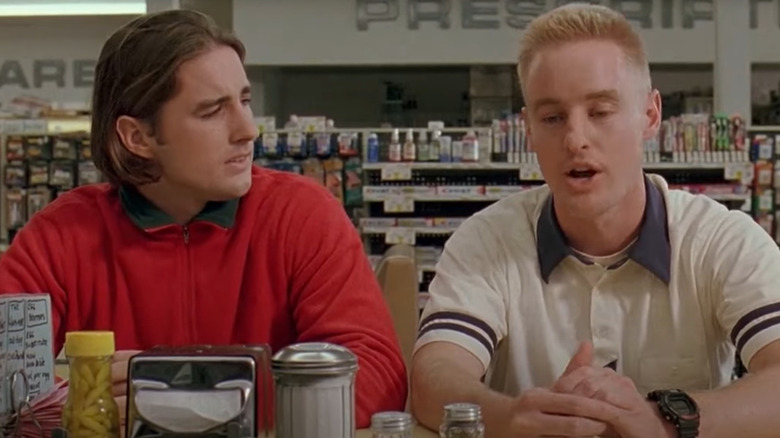
Compared to Wes Anderson's more notable efforts, "Bottle Rocket" is a relatively straightforward character dramedy with a few stylistic quirks. The story revolves around a group of would-be criminals who plan a series of heists to secure their future. Featuring Anderon's distinct brand of humor, a sharp script, and stellar performances from Luke and Owen Wilson (making his film debut), "Bottle Rocket" is a novel bit of indie filmmaking.
Wilson displays his natural acting chops and deft comic timing, delivering his dialogue as though he were making it up on the spot. Interestingly, his style has stayed the same over the last several decades. Still, he's so great at playing himself that it doesn't matter. His character means well but doesn't have what it takes to accomplish the task, mainly because he lacks the intelligence to make crucial decisions. Regardless, he's a lovable guy who cares about his friends. It's easy to see why the actor rose to stardom so quickly.
Meet The Parents
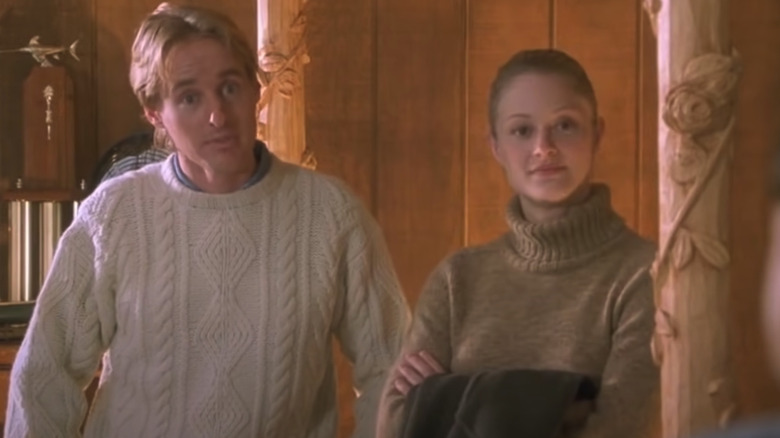
Remember that 2 to3 year span when every movie starred Ben Stiller? "Meet the Parents" kicked off the Stiller phenomenon in style, delivering a hilarious examination of the awkwardness between a stiff father (excellently played by Robert De Niro) and the kind but socially inept man (Stiller) set to marry his daughter. Clever hijinks ensure, primarily a result of misunderstandings, leading to a side-splitting affair with enough heart to resonate on a personal level.
Owen Wilson co-stars as an ex-lover who still pines for Stiller's girl and seemingly has an in with her dad. He crafts an altar by hand to show his affection and undermines Stiller at every turn. Again, Wilson's role is more of an extended cameo than a star turn. Still, he is one of the few who can take something small and mold it into a memorable piece of cinema.
Overall, "Meet the Parents" is a simple, crowd-pleasing comedy jam-packed with hilarious gags. Sure, all the problems resolve themselves far too quickly, and director Jay Roach's inability to frame a joke without some low-brow sexual innuendo gets annoying. Still, when "Meet the Parents" hits, which is often, it hits big and should satisfy those in search of a good time at the movies.
The Royal Tenenbaums
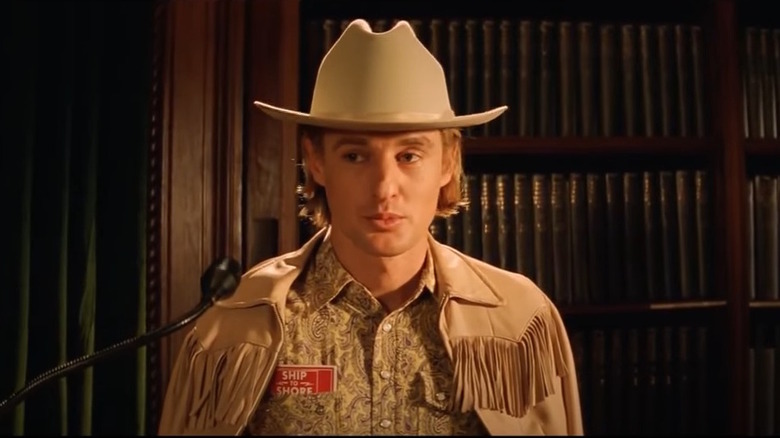
Following his critical successes with "Bottle Rocket" and "Rushmore," Wes Anderson returned in 2001 with his most ambitious project yet, "The Royal Tenenbaums." This profound, albeit humorous, exploration of family includes the director's lavish quirks and absurdist style but lacks the mainstream appeal of "Rushmore" and "The Grand Budapest Hotel." In other words, you either love or hate his approach.
Count me in the former group as one who admires Anderon's distinct filmmaking style. "The Royal Tenenbaums" is a smart yet sad look at the effects bad parenting can have on children. In this case, Gene Hackman's immature and selfish Royal leaves his three brilliant children, Chas (Ben Stiller), Richie (Luke Wilson), and Margot (Gwyneth Paltrow), stuck in a perpetual state of arrested development, leading to a series of unfortunate events that nearly destroys the Tenenbaum family.
Owen Wilson co-stars as Eli Cash, an envious neighbor who noses his way into the family's legacy but realizes he must address his various problems. Wilson is great in the role, using his easy-going charm to gloss over his inner sadness until he hits rock bottom. His part is small but no less critical to the overall story.
Shanghai Noon
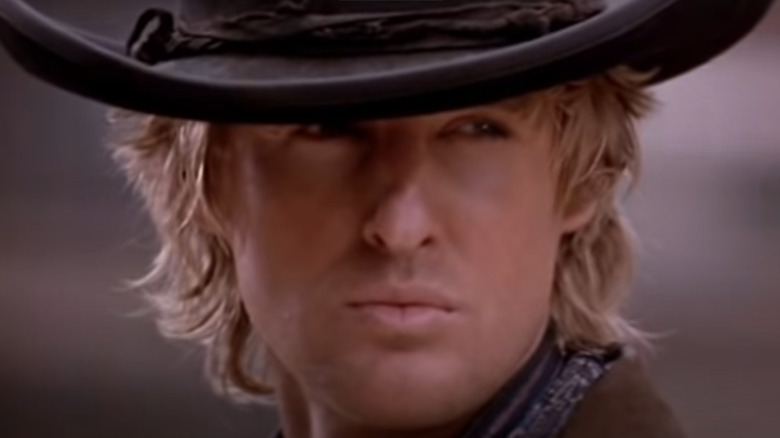
Following small parts in films such as "The Cable Guy," "Anaconda," and "Armageddon," Owen Wilson shot to superstardom in the endlessly entertaining "Shanghai Noon." The action comedy pairs him with iconic martial artist Jackie Chan and plays like a Western version of "Rush Hour." The premise may be thin. Chan teams up with a train robber to find a kidnapped princess, but the laughs come fast and furious thanks to the splendid chemistry between the two stars and Chan's impressive array of tricks.
In one great scene, Wilson and Chan, aka Roy and Chon, get stuck in jail and must devise a scheme to break out. As Roy fumbles about, Chon rips off his shirt, pees on it, and uses the wet cloth (and a piece of wood) to bend the prison bars. Roy watches skeptically, then leaps to help, pressing down with a finger. Then, he squeezes through the metal and exclaims, "See ya, sucker!" before returning to reply, "I'm just kidding. I can't leave my old pal behind bars."
The rest of the film follows suit: Roy and Chon get in hot water, Roy cowers and offers a little help, and Chon ultimately saves the day. The formula may grow old after an hour or so. Still, there's no denying "Shanghai Noon" is a perfectly entertaining, old-fashioned buddy comedy.
The Life Aquatic With Steve Zissou
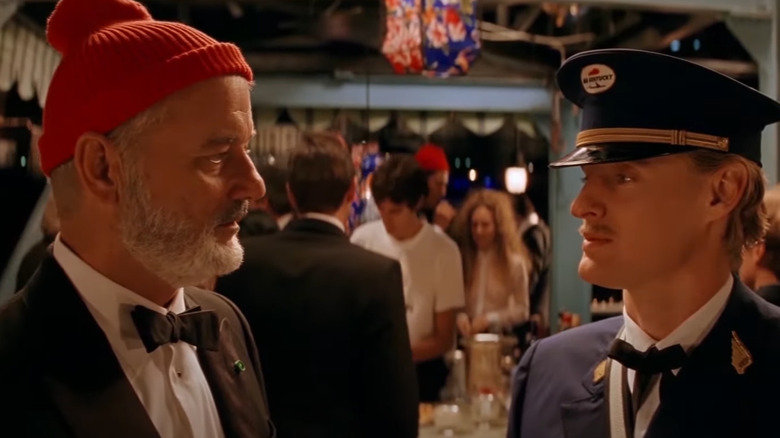
"The Life Aquatic" finds Wes Anderson digging into his bag of tricks to tell the thrilling story of Steve Zissou (Bill Murray) and his efforts to find and kill the jaguar shark that killed his friend. Owen Wilson co-stars as Zissou's (supposed) long-lost son, who accompanies him on the journey, along with a wild cast of characters, including Cate Blanchett, Anjelica Houston, and Jeff Goldblum, and scene-stealing Willem Dafoe.
Packed with incredible visuals, quick-witted dialogue, and deeper themes about life and love, "The Life Aquatic" stands as one of my favorite Wes Anderson films. Where else will you see Bill Murray take on a hoard of seafaring pirates to the music of Iggy Pop?
Critics didn't get the film when it hit theaters in 2004, and it's easy to see why. This is a weird film that ventures into some crazy territory. At first, I was disappointed, but subsequent viewings made me appreciate the craft, the performances (notably Murray and Wilson), and Anderon's overarching vision. It's brilliant.
Midnight In Paris
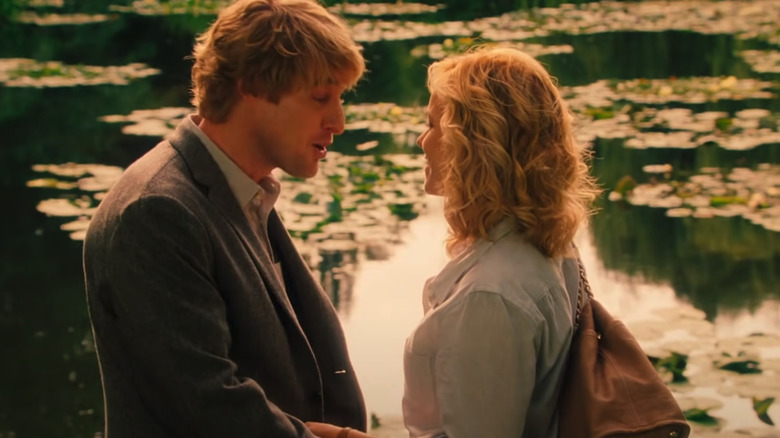
Owen Wilson and Woody Allen make a terrific team. Outside of the brilliant "Midnight in Paris," the duo hasn't collaborated on more projects. No matter. We'll always have Paris. This whimsical study of art and relationships transports Wilson's wayward writer to the 1920s, where he mingles with the greats like F. Scott Fitzgerald (Tom Hiddleston), Ernest Hemingway (Corey Stoll), Gertrude Stein (Kathy Bates), and T.S. Elliot (David Lowe) among others. He also finds love in the form of Marion Cotillard's Adriana, and together they attempt to overcome their desire for nostalgia. The past so entrances Wilson's character that he doesn't notice his modern-day fiance (played by Rachel McAdams) cheating on him. He is shocked to discover the likes of Hemingway and Eliot likewise pining for past artistic triumphs while bemoaning their current age.
"Midnight in Paris" is a fascinating, magical viewing experience, layered with sophisticated themes, good drama, winning humor, and an easy-going tone that reflects Wilson's strengths as an actor.
Zoolander
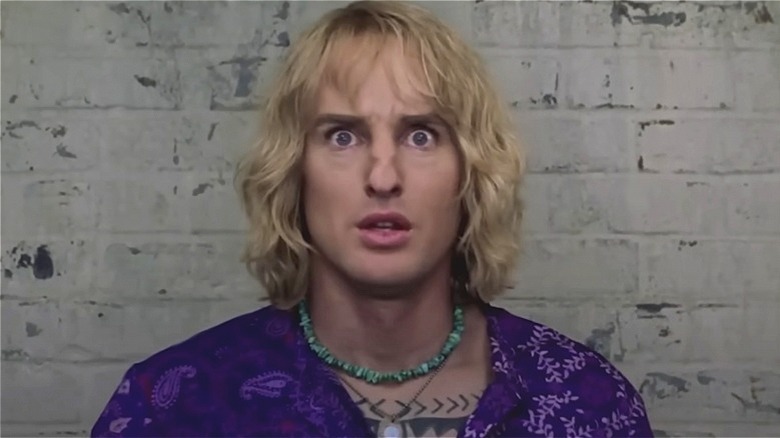
Owen Wilson and Ben Stiller teamed up so many times over the years that it's easy to forget how novel the pair's initial collaboration, "Zoolander," was upon its release. The legendary comedy duo shared the screen in "Permanent Midnight" and "Meet the Parents," but "Zoolander" was the first to feature them as co-leads. Lucky for audiences, the gamble paid off.
"Zoolander" is a riotous, side-splitting examination of male models and the entertainment industry. Stiller plays the titular Derek Zoolander, a popular model whose place atop the modeling world comes under fire when Wilson's Hansel arrives and steals the spotlight. The two rivals must eventually join forces to stop the diabolical Mugatu (a scene-stealing Will Ferrell) from using them as assassins.
Ripe with sight gags, quotable dialogue ("How can we teach kids how to read if they can't even fit inside the building?"), and Stiller's brand of weird, zany, even dark humor, "Zoolander," is one for the ages. Unfortunately, everyone decided to make a sequel. The magic that makes the original such a classic is severely lacking in round two.
No matter, we can still watch the original "Zoolander" and appreciate the incredible creativity that went into crafting this unique comedy. I don't think Wilson has ever been better, though I'd be hard-pressed to call it his best film. That honor goes to ...
Wedding Crashers
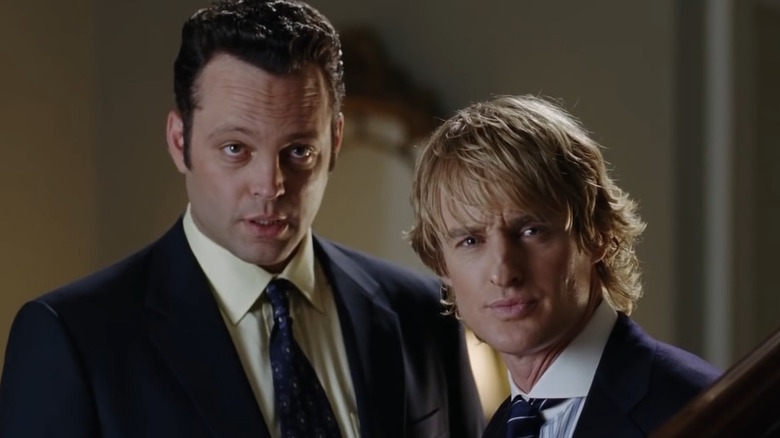
For all of Wilson's commercial and artistic triumphs, none of his movies match the outright hilarity of 2005's "Wedding Crashers," a side-splitting comedy about two laid-back pals (played by Wilson and Vince Vaughn) who spend their days, well, crashing weddings in the hopes of finding vulnerable women to sleep with. However, Wilson's character John grows tired of the juvenile antics and seeks to settle down, especially after he bumps into the beautiful Claire (Rachel McAdams). Unfortunately, Claire only knows John and Vaughn's character, Jeremy, by their fake identities established to crash her sister's wedding. Now they must continue their deception and dodge the prying eyes of Claire's brutish fiance, Sack (Bradley Cooper).
That's quite a lot to digest, but director David Dobkin keeps the comedy firing on all cylinders and even finds time for a little old-fashioned romance. Wilson and Vaughn are at their comedic peak, their electrifying chemistry producing laughs aplenty. McAdams turns in a solid performance, while Isla Fisher steals the show as Claire's rambunctious sister who locks eyes with Jeremy. Oh, and Will Ferrell turns up as a deplorable (and legendary) funeral crasher and almost runs away with the film.
Sure, some humor falls flat, and the by-the-numbers finale may leave viewers rolling their eyes. Still, aside from some minor nitpicks, "Wedding Crashers" easily ranks as Wilson's best effort. It's a shame we never got a sequel!
Read this next: The 20 Best Bill Murray Movies Ranked
The post 12 Best Owen Wilson Movies, Ranked appeared first on /Film.
Use Baking Soda to Get Rid of Moss Growing on Your Sidewalk and Driveway

Not everyone is a fan of the rustic look of moss growing on their driveway, sidewalk, or patio. But, appearance aside, it’s a safety hazard. When moss covers materials like concrete, brick, wood, and paving stones, it can make these high-traffic surfaces extremely slippery, increasing the risk of someone falling.
Former ByteDance Exec Claims CCP 'Maintained' Access to US Data
Read more of this story at Slashdot.
Executive Fired From TikTok’s Chinese Owner Says Beijing Had Access to App Data in Termination Suit
Former ByteDance executive said China government officials maintained access to all TikTok data, including information stored in the United States.
The post Executive Fired From TikTok’s Chinese Owner Says Beijing Had Access to App Data in Termination Suit appeared first on SecurityWeek.
Zelda: Tears of the Kingdom Dynamic FPS Mod Smooths Out Performance Considerably, Even On Steam Deck

The Legend of Zelda: Tears of the Kingdom is now available worldwide on Nintendo Switch, but those with a powerful enough system can enjoy the latest entry in the series on PC thanks to the Ryujinx and Yuzu emulators. Performance, however, may not be stable, but a new mod that is now available for download can smooth it out considerably, improving the experience on Steam Deck as well.
The Dynamic FPS mod, created by ChucksFeedAndSeed, makes it so the game doesn't heavily slow down when framerate dips, which is great for those using the 60 FPS mod as well as for those with systems that have trouble running the game at a stable framerate. As the Steam Deck is currently not capable of running the game with stable performance, this mod is a godsend, as it essentially improves Tears of the Kingdom's playability on the system. As the Dynamic FPS mod is still in an early stage of development, however, it has some issues, and cutscenes still run faster than intended, so you will still need to switch back to a 30 FPS cap if playing at a higher framerate for the best possible experience.
The quick release of the Dynamic FPS mod for The Legend of Zelda: Tears of the Kingdom is mighty impressive, considering the game has only been out for a day, so it will be very interesting to see what mods developers will make in the future. As of now, the modding scene seems to be incredibly dynamic already, as other developers have released mods that introduce Xbox and DualSense button prompts and some quality-of-life improvements, such as faster teleporting.
The Legend of Zelda: Tears of the Kingdom is the direct sequel to Breath of the Wild and, as such, features the same open-world experience that made it one of the most celebrated games of all time. Thankfully, Nintendo did not rest on its laurels, expanding and improving the experience with new mechanics that set Tears of the Kingdom apart from its predecessor, as highlighted by Nate in his review.
The Legend of Zelda: Tears of the Kingdom is now available on Nintendo Switch worldwide.
Former ByteDance exec claims company used bots to inflate TikTok engagement
TikTok is still fighting to remain operational in the United States, but a new lawsuit could complicate things even further for the company. A former ByteDance executive has alleged TikTok’s owner used bots and stolen content to inflate the app’s engagement.
The lawsuit, filed by former head of engineering Yintao Yu and reported byThe New York Times, claims that ByteDance wrongly fired Yu after he pushed back on company practices like stealing other apps’ material. It also claims that ByteDance acted as a “useful propaganda tool for the Chinese Communist Party,” and that China-based employees could access US users’ data.
As The New York Times points out, Yu’s allegations “describe how ByteDance operated five years ago” and come after “several years of mediation.” Still, the claims are still likely to fuel even more scrutiny for TikTok, which is facing the prospect of a nationwide ban in the United States. Lawmakers and other officials have claimed that TikTok is a national security threat and that the app can’t be trusted to protect the data of US users.
Yu’s allegations could intensify those concerns. The lawsuit details “a special unit of Chinese Communist Party members” at ByteDance offices in Beijing who “guided how the company advanced core Communist values.” He also alleges that ByteDance employees manipulated Douyin, the Chinese version of TikTok, to suppress content about protests in Hong Kong and “elevate content that expressed hatred for Japan.”
Some of Yu’s claims also relate directly to TikTok. Notably, he claims that ByteDance engineers stole popular content from apps like Instagram and Snapchat and put the videos onto TikTok. He also alleges that the company used bot accounts to juice the app’s engagement metrics when it was just starting out and trying to gain a foothold in the US. (Yu left the company in November 2018, shortly after ByteDance rebranded Musical.ly as TikTok.)
A spokesperson for ByteDance told Engadget: "We plan to vigorously oppose what we believe are baseless claims and allegations in this complaint. Mr. Yu worked for ByteDance Inc. for less than a year and his employment ended in July 2018. During his brief time at the company, he worked on an app called Flipagram, which was discontinued years ago for business reasons." On the allegation of scraping, they also said: "ByteDance is committed to respecting the intellectual property of other companies, and we acquire data in accordance with industry practices and our global policy."
TikTok has repeatedly tried to downplay its ties to ByteDance and China, including in CEO Shou Zi Chew’s congressional testimony in March. The company has also dedicated more than a billion dollars into Project Texas, which aims to wall off TikTok’s US user data from the rest of ByteDance in an effort to allay the concerns of US regulators.
Update 05/12/23: Added a statement from ByteDance.
This article originally appeared on Engadget at https://www.engadget.com/former-bytedance-exec-claims-company-used-bots-to-inflate-tiktok-engagement-211351640.html?src=rssIf Mosquitoes Love You, Maybe Switch Soaps

Mosquitoes really do like some people more than others. Some of the features that make you a mosquito magnet aren’t ones you can easily alter—your body size, for example, or the natural smell of your skin. But now, a study has found that scented soaps may also make a difference, and that’s something you can easily …
Yellowjackets' Liv Hewson Saved Van From Writer's Chopping Block With One Simple Move
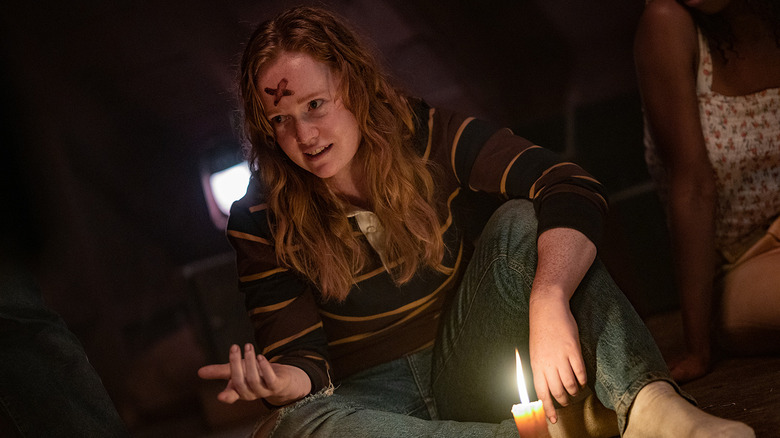
Showtime's "Yellowjackets" is in the unique position of having two troupes of actors playing the same characters in two different timelines set almost 25 years apart. At PaleyFest 2023's TV festival last month, the entire cast was given the rare opportunity of appearing together on stage for one of the largest panels ever for the event. Two of those actors, Liv Hewson and Lauren Ambrose (who play teen and adult Van, respectively) wouldn't have been on that stage if series creators Ashley Lyle and Bart Nickerson would have had their way, initially. According to them, Van was not supposed to survive her stint in the Canadian wilderness and would have been one of the first major characters to die.
In retrospect, it is something of a miracle that Van is still among the living. She's survived a plane crash, been mauled by a wolf leaving her permanently scarred, and she's been set on fire. Now that Lauren Ambrose has been introduced as the adult Van running a throwback video store in Vancouver, it's confirmed that, somehow, she managed to survive the horrors of the woods to lead a fairly quiet and content life.
Van has quickly become one of the most beloved characters on "Yellowjackets," proving that TV showrunners don't always have a master plan that covers the entire run of a series over multiple seasons. Luckily, Van is here to stay, even if the writers were very close at one point to killing her off entirely. At PaleyFest (via Vulture), Hewson learned that they were saved based on one very tiny, seemingly inconsequential detail.
Van Has Beer To Thank For Her Survival
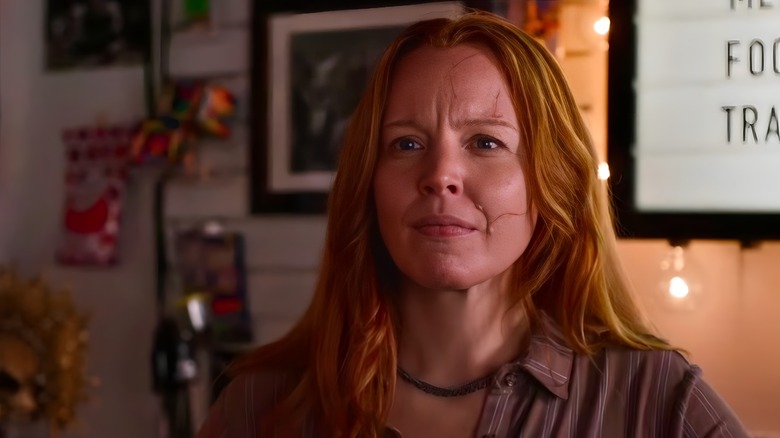
One telling character moment showed the writers' room that Hewson had great instincts that suddenly made Van one of the most relatable characters on the show. "We had toyed around with a tragic, tragic death for Van," Lyle said at the PaleyFest panel. Hewson was surprised to find out which scene changed her character's fate forever.
"There was a great moment that we found when Jackie lined everybody up at the kegger, and Liv made the choice that before they went, they topped off their beer," Nickerson said. That quick improvisation was enough to convince the writers to keep Van around. A shocked Hewson exclaimed, "That was it?!" That little instance of Van hitting the keg one more time sounds exactly like something your own friend would do at a party. It instantly gave Van a little more of a cool factor and a sense of humor that the writers have taken full advantage of.
Renaming the impromptu homecoming dance the surviving girls have in the woods to "Doomcoming" is another personal favorite quip. Those one-liners make Van all the more endearing to fans, and to Hewson as well. They explained the affection they have for Van and the close connection they feel towards the character. "I read somewhere once that the actors who play face characters at Disneyland aren't allowed to say that they play those characters. 'I'm a friend of Snow White's'" Hewson said. "That's how I feel about Van. She's real, and she's my friend."
New episodes of "Yellowjackets" stream Fridays in the Showtime app, and air Sundays on Showtime.
Read this next: Every Yellowjackets Main Character, Ranked
The post Yellowjackets' Liv Hewson Saved Van from Writer's Chopping Block with One Simple Move appeared first on /Film.
Zelda Week: Fear Itself

[As Zelda Week winds down here at Destructoid, I wanted to dig back into the archives and resurface an oldie-but-goodie. This 2011 piece from Noir seems like a fitting companion to the weird shenanigans of Tears of the Kingdom, and it's also a good blog. So we're bumping it up the feed again today, in 2023, to celebrate that. Happy Zelda Week! - Eric]
Many people's first Legend of Zelda game was Ocarina of Time or A Link to the Past, but me? Majora's Mask stole my Zelda virginity. I remember seeing a trailer with this kid putting on masks that made caused him to go through a painful looking transformation into something else. I remember a boss that commanded a swarm of moths, an insane looking man with masks, an even more insane looking moon, and of course the enigmatic Majora's Mask itself. I don't know where I saw this trailer, I still can't find it to this day. I know I had to have the game after seeing it though, even if those eyes filled me with terror.
As a child I was frightened of Majora's Mask. I didn't want to look at it, doing so filled me with anxiety. I thought I would die just from looking at those massive eyes that stare endlessly into the depths of my soul. I was also fascinated by them though, so I asked my parents to rent it for me. I even got an Expansion Pak just for it, which became another useless peripheral a week later. The point is that I needed this game, the odd nature of it just drawn me to it. It wasn't like my other games. It wasn't bright and light hearted like Kirby 64: The Crystal Shards or Banjo-Tooie, no. This game was different and I could feel it in my bones. Mind you, I was only about 8 years old at this time. I only had a few N64 games and they were mostly happy, child friendly games rated E for Everyone by the young ESRB system.
So I eventually acquired this accursed game and my standards were met. The game starts up again and there it is, the epitome of my nightmares - Majora's Mask. This was before I played any actual horror games, so I was easily scared by something as simple as a mask. Resident Evil 3's Nemesis and the psychological horror of Silent Hill wasn't something I was aware of at this point. Majora's Mask was my definition of fear, but that didn't stop me from playing the game. This "thing" was all over the game, seeing it was practically unavoidable if you wanted to play the game so I pressed on.

The beginning of Majora's Mask is better than any Zelda game when it comes to hooking the player and forcing them to explore. Your horse is stolen by a masked kid who curses you, turning you into a Deku scrub. After that you encounter the disturbing Happy Mask Salesman who may seem a bit too happy despite his predicament. No. He's not happy, not happy at all. He's downright pissed, pissed off to the point where he snatches up Link and shakes him repeatedly. Then your quest to defeat Majora's Mask begins in Termina. It's like an acid trip that ends with "Where am I? Why do I look like this?" and you're forced to find out who's fault it is.
In every other Zelda game the first ten minutes of the game is fairly peaceful and light hearted, awful things just don't happen one after another. Majora's Mask isn't like that though, it beginning pushes the situation from bad to worse and doesn't care how you feel. Then you're finally faced with the fact that the moon is going to crash down on Termina and annihilate everything in sight, including you. This moon...it has the same beating eyes that filled me with the same dread that Majora's Mask did. It was an unstoppable force that continually looked down on you during the entire game with those eyes because it knew you couldn't stop it.
You're able to reverse time fairly early in the game, but I was not a smart child so I never got that far when I had this game. Thus I was faced with this feeling of dread that everything was going to be destroyed, everything I was doing felt purposeless. I made my way around Clock Town, but was never able to stop the destruction. This was before I had access to the vast internet, so I grew mad at the game for forcing an impossible task on me. It was at least six years before I played the game again, but in that time I still thought about it from time to time. It was merely a rental (that I for some reason never bought), but I'd say it affected me more than any of the other games on the N64.

Eventually I did beat Majora's Mask, with a little help from the internet, and all was right with the world. As a teenager I had journeyed through Majora's Mask and discovered that it was a dark game in ways I didn't know. The citizens of Clock Town all had their own stories, along with everyone else in the vast land of Termina. The apocalyptic situation I had on my hands seemed even worse after learning of the problems around Termina, many of which were caused by the mask wearing Skull Kid. Skull Kid's story is one of the grimmest out there despite seeming to be the mastermind behind everything. Skull Kid was originally a child who wanted to have fun, but that desire was twisted into a form of destructive behavior after being controlled by Majora's Mask. At that point Skull Kid becomes a puppet, though he retains his mischievous personality.
Skull Kid himself represents what the Legend of Zelda: Majora's Mask truly is. It is a twisted reincarnation of a children's game that presents itself as a dark and nightmarish experience. Behind the mask Majora's Mask is not as bad as an M-rated horror game, but the mask it dons still manages to make itself appear menacing. As a child this mask is all that appears and that's what I saw. While I wouldn't say that Majora's Mask as a game and an object has scarred me, but it's done something definitely. It thrust me into the Zelda series, imbued in me a love for the strange, and made me wish I had a replica of Majora's Mask itself in my home. As long as it remains out of sight most of the time!
The post Zelda Week: Fear Itself appeared first on Destructoid.
The Legend of Zelda: Tears of the Kingdom Runs at 8K and Locked 60FPS on PC via Yuzu

Today, Nintendo launched The Legend of Zelda: Tears of the Kingdom for the Nintendo Switch. The long-awaited game is out now on the console, although it's been playable on Switch PC emulators like Yuzu and Ryujinx for a few days.
While the performance was less than great at first, the new version of Yuzu Early Access appears to run the game very smoothly. Here's an example of The Legend of Zelda: Tears of the Kingdom running at 8K resolution and nearly locked 60 frames per second. Granted, the YouTube video was captured on a PC among the most powerful you could buy, equipped with the following specifications:
- O.S: Windows 11 Pro
- CPU: I9 13900K P Core@5.9GHz E Core@4.6GHz
- GPU: RTX 4080 Founders Edition
- Motherboard: ASUS Z690-PLUS TUF Gaming
- Power Supply: Corsair RM1000x
- System Memory: 64GB G.Skill Trident Z RGB DDR4 4000MHz
- Boot Drive: Samsung 970 Evo 500GB NvME
Still, it is an impressive feat on launch day, although Yuzu and Ryujinx have often surprised their users by providing optimized versions of Nintendo Switch exclusives on day one. Needless to say, being able to play the game at a higher resolution and frame rate is a very appealing proposition.
The Legend of Zelda: Tears of the Kingdom was hailed by most critics as one of the best games ever made, with an average score of 96 on Metacritic and 97 on OpenCritic. Our reviewer, Nathan Birch, was slightly less enthusiastic and rated the game 9 out of 10.
Ultimately though, despite the number of 10 out of 10 reviews the franchise has received over the decades, most Zelda games aren’t immaculate, perfectly-consistent adventures. They’re fantastic overall experiences, each with their own quirks and issues. The same can be said about The Legend of Zelda: Tears of the Kingdom, which has its brief rough patches but pulls off the “make a new game using an existing map” gambit better than anything I’ve played before.
Still, you do start to feel the strain of everything Nintendo is trying to load onto the BotW framework. As much as I enjoyed the vast majority of my time with Tears of the Kingdom, toward the end of my playthrough, I felt something I don’t often feel with a Zelda game – a desire to wrap things up. To be done. I didn’t feel that with BotW, which I played for far longer than I had to before I finally tackled Ganon, because I was just so immersed. Some of the enchanting, indelible moments I experienced exploring this Hyrule the first time around just aren’t replicated in this sequel, but perhaps expecting that of TotK isn’t realistic given the nature of the project.
If you're just entering The Legend of Zelda: Tears of the Kingdom today, make sure to check out our beginner FAQ. Look forward to more guides soon.
'The Legend of Zelda: Tears of the Kingdom' Embraces Mad Scientist Discovery
Let’s Address the Cybersecurity Careers Gap

Too many people are unsure how to enter or grow in the cybersecurity industry. It's a relatively young field, and we haven’t done a good job of defining what it means to have a career in it. Hiring managers who are worried about finding candidates because of the much-discussed cybersecurity skills gap should consider the underlying issue, which we might call the cybersecurity careers gap.
The cybersecurity careers gap is the idea that it’s hard for security professionals to enter and progress in the field of cybersecurity. The shortage of qualified security professionals probably isn’t due to insufficient training options–many free and commercial learning opportunities exist. Instead, it’s finding a first job to apply and expand skills over the years people find difficult. It’s also hard to determine how to turn a series of successive jobs into a career.
Addressing the Careers Gap
To address the cybersecurity careers gap, established practitioners should:
- Think outside the box. Develop an approach that allows organizations to hire people with non-technical backgrounds for entry-level roles–musicians, hospitality workers, teachers, and so on.
- Explain what a cybersecurity career entails. Define and communicate pathways for progressing in the field, helping individuals get started and progress in their career journeys.
- Offer career counseling to people already in the field. Help practitioners map their strengths and aspirations to career pathways to help ensure their professional journey is fulfilling.
Those just entering the field should put effort into understanding their interests and how they map to various career options. Becoming a Chief Information Security Officer (CISO) might not make sense for everyone in the field, and that’s okay. Depending on your interests and goals, you might not want to manage a team, and, instead, might want to spend your career on the hands-on technical side.
Non-Traditional Practitioners Welcome
We need all types of people in cybersecurity because of the variety of challenges we’re solving. If you are deeply analytical or uncommonly creative, we can use your help. If you excel in human or computer communications, we can use the help. For example, at my former job, we loved hiring former bartenders who had an interest in security and tinkered with IT gadgets as a hobby–they were strong at multitasking and interacting with people.
By allowing non-traditional practitioners to fill entry-level cybersecurity roles, organizations can increase the number of people entering the career funnel. Many of them will develop advanced expertise with the right mentorship and training. This requires adjusting job requirements for entry-level roles, reaching out to people outside the traditional talent pool, and making them feel welcome.
Cybersecurity Career Pathways
How should people progress in their cybersecurity careers? There are so many different roles, titles, and responsibilities. They differ across companies, geographies, and industries, and confusion regarding the best approaches to climbing the career ladder probably discourages many individuals from attempting to enter the profession in the first place. Moreover, such uncertainty leads to current cybersecurity personnel failing to progress in their professional journey.
Today, resources are starting to appear that can guide new and existing professionals. For example, SANS Institute, which offers cybersecurity training, published a skills roadmap that outlines several possible career paths and associated skills. Various government organizations also offer detailed guidance, including:
- The National Initiative for Cybersecurity Education (NICE) Framework, created by the National Institute of Standards and Technology (NIST), defines the lexicon for discussing cybersecurity roles. Candidates and HR managers can explore the framework’s content to understand security roles on the Cybersecurity and Infrastructure Security Agency (CISA) website.
- Cyber Seek Security Career Pathway has an interactive website that lets candidates get details about each role and see how it fits into the appropriate career path. For each role, it shows salary information, related certifications, and associated NICE Framework skills.
- The European Cybersecurity Skills Framework (ECSF) document, published by the European Union Agency for Cybersecurity, details common cybersecurity roles. It’s not as comprehensive as NICE, but it offers more information about each role, including titles, mission, responsibilities, deliverables, skills, etc.
Those new to the industry, or those wondering whether cybersecurity would work for them, will also benefit from the book by Alyssa Miller, Cybersecurity Career Guide.
These resources can help new and experienced professionals navigate cybersecurity career paths. They can also help with hiring managers and HR professionals recruit and retain talent.
Career Guidance and Mentorship
Even more experienced professionals can get lost in their career journey without the right support and guidance, given the many types of positions under the cybersecurity umbrella. It’s even more likely for those who are new. Consider:
- How might a person with a network security background get into incident response?
- What awaits those who get tired of working in a security operations center (SOC)?
- What paths exist for technical people who don’t want to become managers?
These questions are hard to answer alone.
People need to understand their capabilities and strengths to progress in their careers. They also need people around them to whom they can turn for advice. Those seeking guidance can turn to professional security organizations that offer educational and networking opportunities. There are also mentorship initiatives, such as Women in Cybersecurity (WiCyS) and Cyversity, which pair mentors with mentees and facilitate fruitful interactions.
By being open to newcomers, exploring different career paths, and supporting each other, we can grow the number of cybersecurity professionals and chart professional development paths for each other to cover the cybersecurity careers gap.
Four Strategic Simulations Inc. games getting re-released on PC

Get your tiles drawn out
SNEG is soon releasing an absolute buffet of classic Strategic Simulations Inc. DOS games onto GOG and Steam. Four, to be specific. Do you remember when GOG was all about preserving retro PC games? They still do. It just isn’t as much of a focus anymore. It’s always exciting to see when classic games get ported over.
The first is Veil of Darkness. Originally released in 1991 by Strategic Simulations Inc., it’s not a strategic simulation. It’s actually an isometric adventure game with RPG elements. It’s exploration-heavy, which kind of makes it feel like a pioneer of the survival horror genre, just without most of the survival horror hallmarks.
Next is Star General, which is part of the 5-Star General series that Strategic Simulations Inc. published. Catware developed this one and released it in 1996. Star General features hexagonal, turn-based combat that takes place both in the horrific vacuum of space, as well as on the horrific terrain of alien planets.
https://youtu.be/Vl9Z4j8Kbe0
Then we have The Summoning, which is a fantasy RPG with multiple endings. Developed by Event Horizon Software, The Summoning originally released in 1992. It’s rather narrative-heavy, and the graphics and audio just scream MSDOS.
Finally, we have Dark Legions. This was a 1994 title by none other than Silicon Knights, who would later release cult classics such as Eternal Darkness: Sanity’s Requiem. This one is an action-strategy game that has battles taking place in a board game format. This one was a bit more well-received than the others back in the day.
New audiences for old games
Personally, I haven’t played any of these Strategic Simulations Inc. games, but I always get excited when a publisher brings back retro titles. While none of these are certifiable classics, they deserve the chance to live on and potentially find new audiences. Maybe I'll even play and enjoy them, who knows?
All the games listed above will be available on GOG and Steam. The only listed release date is “May 2023,” so it could be any day now.
The post Four Strategic Simulations Inc. games getting re-released on PC appeared first on Destructoid.





